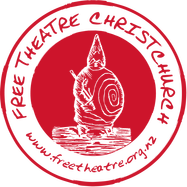|
A big thank you to Charlie Gates for sending this beautiful image of The Gym the year it was built. Originally the gymnasium for Christchurch Boy's High School (which occupied the buildings next door), it eventually became the home of Academy Cinema in 1976 when the university gifted the wider site to the city when it relocated to Ilam. The Academy occupied the building until the earthquakes of 2011 closed the entire site. As part of the restoration of the Arts Centre, the building was stripped back to its original form and strengthened. Free Theatre has occupied the building since September 2014. Interior of Gymnasium, Christchurch Boys High School, Christchurch. Webb, Steffano, 1880-1967 : Collection of negatives. Ref: 1/1-004026-G. Alexander Turnbull Library, Wellington, New Zealand. /records/23100780
0 Comments
... simply the most exciting theatre piece Christchurch has experienced in years... HAMLETMACHINE's opening night full house proves that Christchurch audiences do support serious theatre 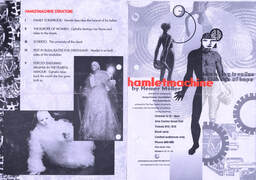 If the 1980s had been about establishing a youthful, energetic presence in Christchurch, the 1990s saw exciting developments in Free Theatre's aims and growing influence. This included engaging with international contemporary performance artists and the founding of a dedicated Theatre and Film Studies Department (est. 1997) that unfettered the theory and practice of theatre and film from the traditional, marginalised existence in the literary dominated realm of English Departments. Canterbury University was the first in the country to do so and its Theatre and Film Studies Department quickly became successful with a rapidly growing postgraduate culture. This ultimately culminated in the emergence of the groundbreaking Te Puna Toi Performance Res Te Puna Toi Performance Research Project in 2001. While the company had engaged with past and current avant garde in the 1980s, it was perhaps a collaboration with Free Theatre Munich (est. 1970) in 1991 that really established the company as a noted presence in the international contemporary theatre scene. Falkenberg initiated the collaboration with this theatre company from his home town, inviting directors George Froscher and Kurt Bildstein to come to Christchurch to present a reimagined production of a Heiner Mueller work, HamletMachine. They had presented the work previously in Germany and the US. Mueller's work, considered the most important in Germany since Brecht, had never been staged in New Zealand, let alone Christchurch, and this offered the opportunity for local artists and the students of the growing Theatre Programme at Canterbury University to have access to international contemporary theatre through the making of it with established international theatre artists. On the strength of the international exchange, Free Theatre Christchurch secured an Arts Grant from the QE II Arts Council of New Zealand (later CreativeNZ). Remarkably, the company would not receive another CNZ grant until 2012 despite many years of trying with an extraordinary array of high profile, high quality work with a diversity of collaborators. HamletMachine is typical of Mueller's work in that it is based around a collaging of texts and monologue's, rather than conventional narrative or plot. In this instance, the work is concerned with what it means to be an actor - a concern that Falkenberg would return to in different social, historical contexts, including current project How Not To Be Hamlet? A combination of professional actors and students worked on the HamletMachine production, which took place around the Arts Centre, in Rutherford's Den and the Great Hall. It was a hugely successful production both in popular and critical reviews and paved the way for a series of dynamic projects through the 1990s. Below are some stills from a Nightline (TV3) piece on the production. The full clip itself can be found on the HamletMachine page. Note on above comment by 2022 Website Editor Marian - Many thanks for your comment Trevor! It has been included as a screenshot as we were unable to transfer comments over to this new account.
As Free Theatre continues to develop a key project, How Not To Be Hamlet?, which explores the effects of the 1984 social and economic reforms on New Zealand society, it is instructive to consider this formative Free Theatre production. As with so much of Falkenberg's work, like Fassbinder, there is a prescience and unflinching gaze at contemporary political life via the personal experience of the collaborators. Perhaps even more so than Fassbinder, who famously replicated his personal life on stage and screen (Bitter Tears a prime example), Falkenberg is closer to Brecht in finding through a conversation with his collaborators a political perspective that does not rely so heavily on his personal perspective. This is not to say Falkenberg is without a personal view but it is his ability to inspire questioning in the collaborators that allows the work to come into being, making it relevant and important to everyone involved in producing the work. This is evident in his theatre work and his foray into film with Remake in 2007.
In a culture famously reticent when the subject of politics is raised, Free Theatre's approach to theatre elevates the experience to be a relevant gauge of the time and place. The company finds ways of provoking discussion that may not always be popular but that are nevertheless appreciated as essential by those that view art as a means of resisting the conformity of the status quo by making visible ideological perspectives that are hidden as seeming natural or inevitable. Free Theatre Flashback #2...The Arts Centre and making connections inside and outside Christchurch7/23/2017
One of the many very popular Free Theatre cabaret nights in the basement space. At the same time, as the Free Theatre was gaining new audiences, popularity and notoriety in Christchurch, links were being established with contemporary theatre makers in other parts of the country. Conversations were initiated with Amamus, Red Mole and Theatre Corporate. Falkenberg also collaborated with other theatre-makers, most notably acting as dramaturg for Tony Taylor’s production of Big and Little (Gross und Klein) by Botho Strauss at Downstage in Wellington in 1981. The production was considered by critics to be a bold, new signal for New Zealand theatre to consider other possibilities beyond the usual English literary theatre. Strauss was considered a bright light of the German avant garde at the time. For the Dominion, Ralph McAllister wrote: “I’ll dream that Wellington audiences will flock to see this, one of Downstage’s finest accomplishments”. McAllister claimed that he and Bruce Mason attended on multiple occasions, running from table to table, “applauding, stamping and calling out 'Bravo!' in different voices”. Mason, reflecting on the relationship between art and theatre, had initially written a scathing review that seemed to scare audiences away: “Big and Little is an exercise in mountainous banality". However, in an unusual follow-up review in the Evening Post, Mason reconsidered the work, comparing it to the experimental work of John Cage and “credited it with making him consider afresh ‘just what a play should be and from what assumptions it proceeds. For this experience alone, I must thank Downstage’”. He would later conclude: “Finally, this production can be viewed as either a monumental act of courage or an equally monumental folly. I concede that it is the responsibility of a professional theatre to let us see, from time to time, a tough, thought-provoking even grueling play from Europe. I will end, therefore, by saluting Downstage for an act of courage”. The production was, I felt at the time, even more meaningful than the one I had seen at the Kammerspiele in Munich and gave me an incentive to make theatre in this country. On the other hand, the excellent lead actress that met me during a Court production in Christchurch later did not seem to find any more challenging work in New Zealand that would have made her stay and shared stories about the season of Big and Little, where on one night the three audience members present applauded a rat that run across the stage upstaging the actors. Most memorably, I played several roles in the four-hour-long production of Botho Strauss's Big and Little a visionary production inspired by Taylor's study trips to Germany. This was one of the first productions of this post-modern, existentialist epic outside of Germany and it demonstrated, not for the first time, Downstage being ahead of its time, a genuine leader in the arts in Aotearoa/New Zealand. Despite a desire to work together again, Falkenberg and Taylor were unable to make it happen in Christchurch. However, it has long been a feature of Falkenberg's work that he has attracted and been attracted to working with artists of high calibre with a view to really pushing the boundaries in search of exciting new work. It is one of the defining features of Free Theatre work.
Every social order creates its own reality which is backed up by propaganda, whether it is subtle or obvious – things like the work ethic, the marriage ethic and the desire for happiness and security. Any individual who stands out against these myths is treated with suspicion or down-right hostility. Note from 2022 Website Editor Marian. This comment above appears as a screenshot as blog comments could not be transferred across to our new account. Many thanks for your comment!
The development of a strong ongoing Free Theatre Group in the early 1980s was made possible by the Project Employment Programme (PEP) introduced by the National government of the time. A wider scheme across multiple industries, it also allowed artists to work in the theatre with a view to developing skills that would contribute to ongoing employment. This allowed for a dedicated ensemble to develop in the new Arts Centre theatre the company had built in 1982. A diversity of works were produced in line with the company's manifesto: To stage old and new rarely staged European plays in original translations, new New Zealand plays, and classical English texts in an unusual and experimental style. Emphasis is placed on non-verbal action and high production standards, discouraging the star system and encouraging long rehearsal and training periods in a company context. Not the worst misspelling over the years. Productions through the early to mid 1980s ranged from works produced by Peter Falkenberg such as the company's magnificently gruesome King Lear, hauntingly beautiful Leonce and Lena and spectacular Lulu, to stagings of new works written by company members, including Nansi Thompson (Texts For Decomposition) and Stuart McKenzie (The Joffongract, A Letter from L, The Mortal Pleasure of Wanda Lust and The Rapist Over Susannah). Meanwhile, Robin Bond initiated with Electra what would become an ongoing series of productions of classical Greek texts that he translated and directed. At the same time, a slew of imaginative new works emerged that exposed local audiences to international contemporary theatre through presentations of avant garde innovators from Brecht to Sam Shepard, Patti Smith and Peter Handke... Mahagonny, Cowboy Mouth, (both directed by Falkenberg), Action (dir. Carol Bellini-Sharp), Tongues (assisted by Bellini-Sharp and Falkenberg), The Ride Over Lake Constance (dir. Nick Frost), Red Cross (dir. Leonard Wilcox with Falkenberg) and Takeaway (dir. Falkenberg with Roy Montgomery). Alongside this, an education programme with immersive productions such as The Hunting of the Snark began to attract students. Current Free Theatre ensemble member Emma Johnston cites Free Theatre's Snark production as a most memorable early theatre experience. These productions served as the foundations to the emergence of a special new voice of contemporary theatre in New Zealand. The Press Arts Editor Chris Moore, previewing Faust Chroma in 2008 said: "For quarter of a century, Free Theatre has redefined cultural horizons and shaped Christchurch perceptions of contemporary theatre". With daring and determination, Free Theatre established itself in the 1980s as part of a tradition of Christchurch arts organisations and artists in the visual arts, music, literature and film that developed new work that was distinct and influential in the wider cultural landscape of New Zealand. We've yet to feature all Free Theatre productions on our website (its a big archive!) but below are a few pics from the productions mentioned some of which feature on the website (links above). You can also see images from productions over three decades in our archive gallery. Make-up Ground Down / Texts for Decomposition (1983)Leonce and Lena (1983)Dinosaurs and all that Rubbish / The Hunting of the Snark (1984)Cowboy Mouth (1985)Action / Tongues (1985)The Rise and Fall of Mahagonny (1985)Lulu (1986) |
Free Theatre ChChFree Theatre Christchurch. Intermittent blogging. Thoughts. Enjoy. Archives
March 2021
Categories |
- HOME
- ABOUT
- UPCOMING
- EDUCATION
-
ARCHIVE
-
Productions 1979 - present
>
- Babylon Berlin
- Beggars Banquet
- Woyzeck
- The Tempest
- The Axe
- Endgame
- Digitising Performance
- Erewhon: Over the Range
- A Summer Night's Dream
- How Dare You
- A Winter's Tale
-
Ubu Nights
>
-
Past Ubu Nights
>
- Ma Ubu Night
- Ubu Through the Looking Glass
- Ubu in Wonderland Ubu Night
- Frankenstein Ubu Night
- Casablanca Ubu Night
- Faust Ubu Night
- Not Hamlet Ubu Night
- Punk Ubu Night
- The Art of the Deal Ubu Night
- Crossroads Ubu Night
- Ubu Shows Us the Way to Brecht's Whiskey Bar
- The Devil and the Blues Ubu Night
- Bowie Ubu Night
- Warhol Ubu Night
- Berlin Kabarette
- Beat Ubu Night
- Twin Peaks Ubu Night
- David Lynch Ubu Night
- Kafka Ubu Night
- Tango Ubu Night
- Ubu Ubu Night
- Lovecraft Ubu Night
-
Past Ubu Nights
>
- Ars Acustica
- Alice
- The Black Rider
- Frankenstein
- The Mauricio Kagel Project
- Te Puna Toi 2015: Footprints/Tapuwae
- Kafka's Amerika
- The Soldier's Tale
- Canterbury Tales
- I Sing the Body Electric
- Hereafter
- Passion, Pulse and Power
- The Earthquake in Chile
- Doctor Faustus
- The Marvellous Corricks >
- Distraction Camp
- Remake
- Ella and Susn
- Free Theatre - 25 years and counting...
- Faust Chroma
- Enigma Emmy Goering/Nico Sphinx of Ice
- Faust Feast
- Diana Down Under
- Philoctetes >
- Fantasia
- Christmas Shopping
- Grimm's Sleeping Beauty
- Achternbusch in the Antipodes
- Caucasian Chalk Circle
- Samson Airline
- Kabarett Kabul
- Footprints/Tapuwae
- Last Days of Mankind
- Medea
- Bakkhai / Diotek
- Krapp's Last Tape
- Murderer Hope of Women / The Philosopher's Stone
- Comrade Savage
- Love on a Bicycle
- Resolution Island
- Songs for the Judges
- Crusoe
- Oedipus Rex/Oedipus at Colonus
- States of Shock
- Empire Builders
- Yes
- Power
- Robinson Crusoe: Or I THat Was Born To Be My Own Destroyer
- Newsbites
- Dumped in Space
- MedeaMaterial
- Salome
- Electra
- Sphinx and Strawmen
- The Girl Who Sings Waterfalls
- Hamletmachine
- Oresteia
- A Respectable Wedding
- Bitter Tears of Petra von Kant
- Double Act and Postponeless
- Cloudkiwiland
- Preversions
- G.O.P. Helpomatic
- The Mortal Pleasure of Wander Lust
- Red Cross & Takeaway
- Lulu Earth Spirit
- The Meeting
- Action / Tongues
- Cowboy Mouth
- The Rise and Fall of the City of Mahagonny
- A Letter from L
- Dinosaurs and All the Rubbish / The Hunting of the Snark
- The Ride Across Lake Constance
- Electra
- In Three Minds
- The Rapist Over Suzannah
- 1984: The Future Is Now
- Leonce and Lena
- Kabernette
- The Joffongract
- My Foot, My Tutor
- King Lear
- King Ubu
- Jazz Cellar Dada / Heavy Metal Cabaret
- Kabarett
- Black Cat Cabaret
- The Gas Heart/Ox on the Roof/The Mirror Wardrobe One Fine Evening
- Round Dance
- Woyzeck
- Make-up Ground down / Texts for Decomposition
- Court Case: Arts Centre vs Free Theatre
- Image Gallery 1979 - present
- TV3 Clips
- Selected Reviews
-
Productions 1979 - present
>
- Te Puna Toi
- SUPPORT
- BLOG

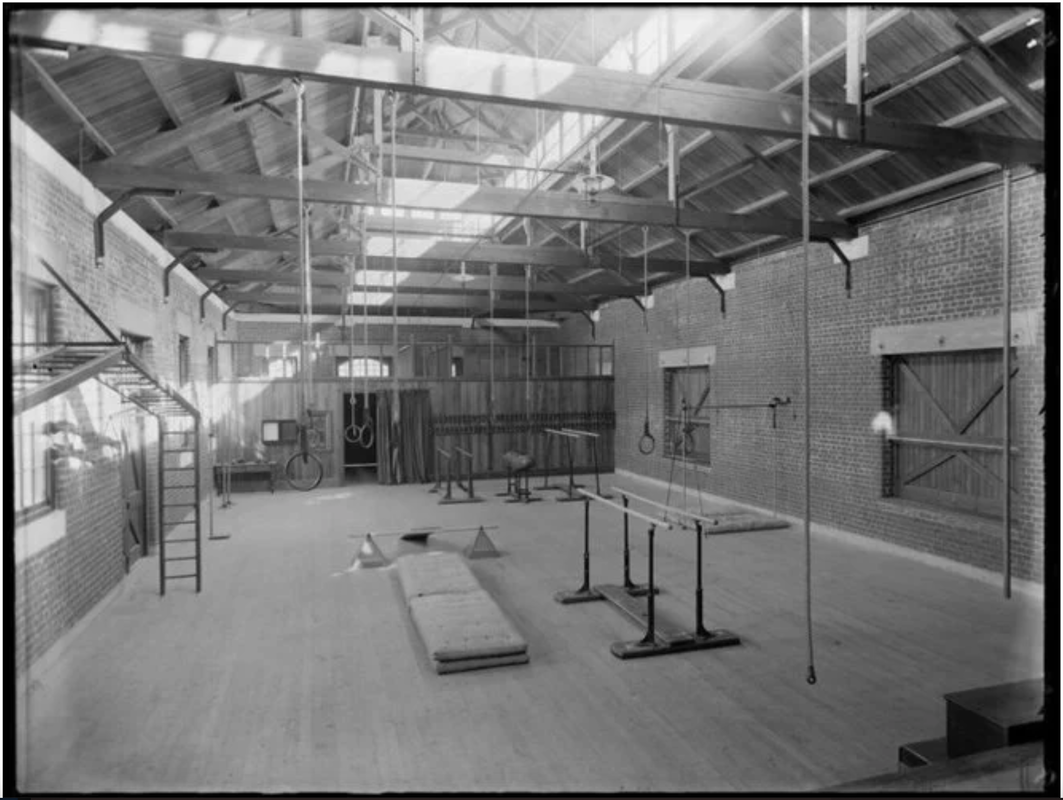
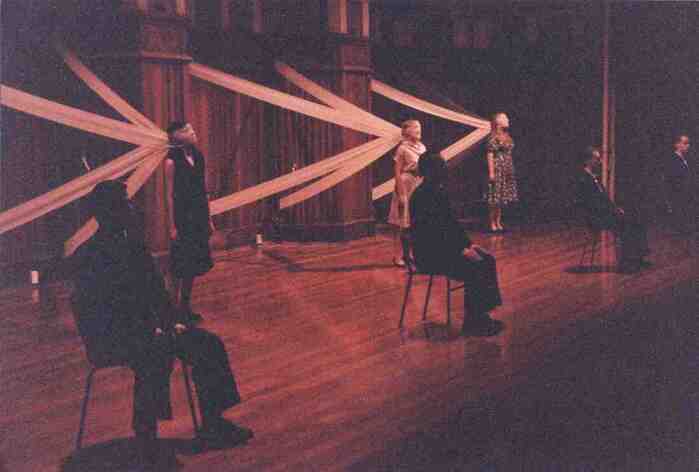
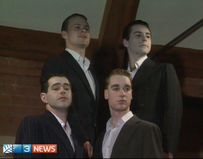
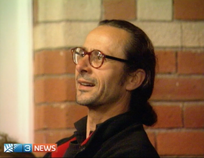
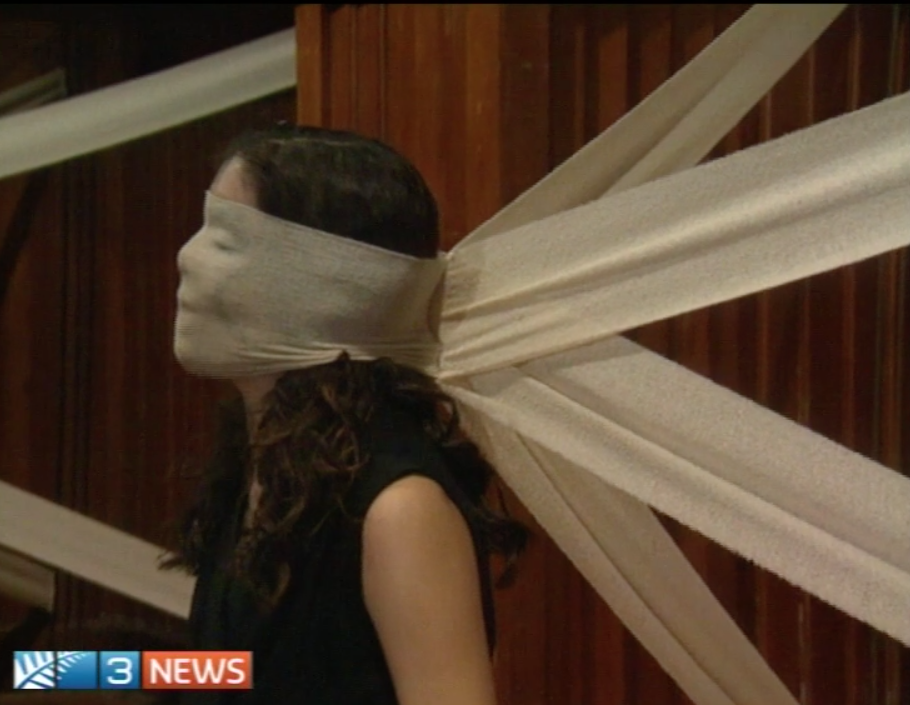
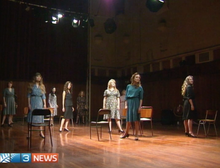
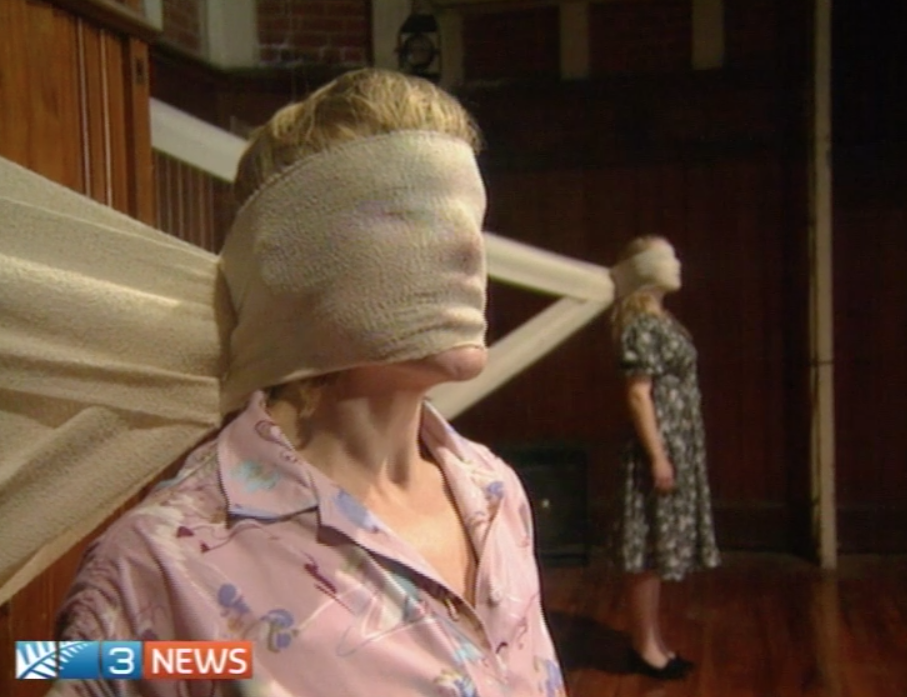
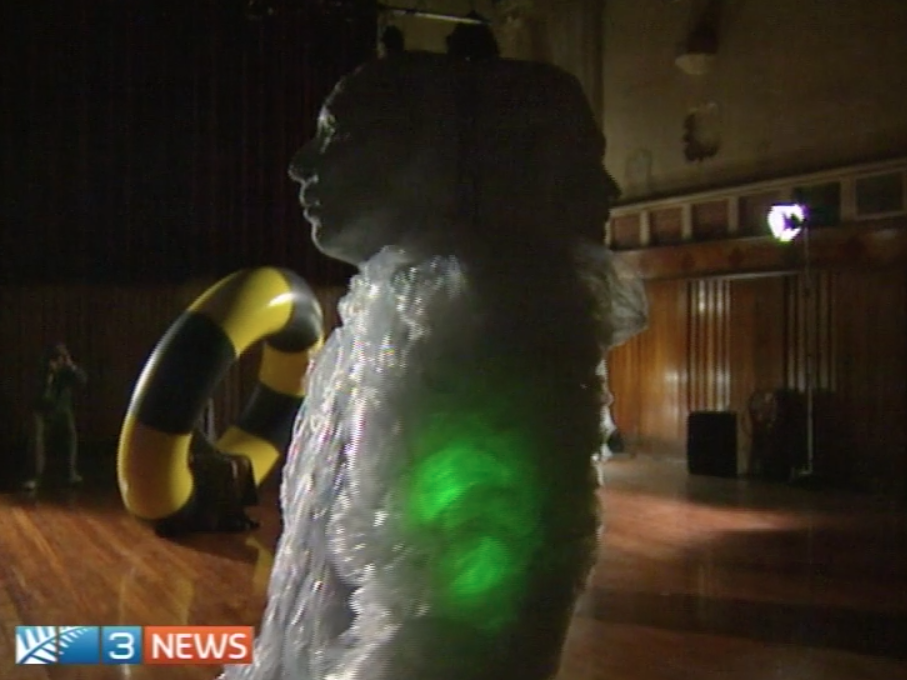
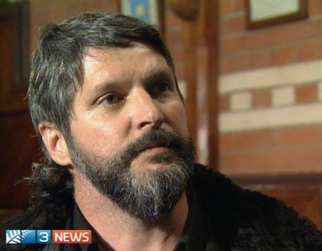
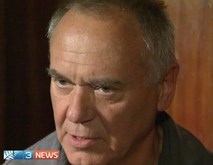
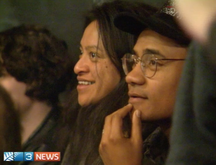
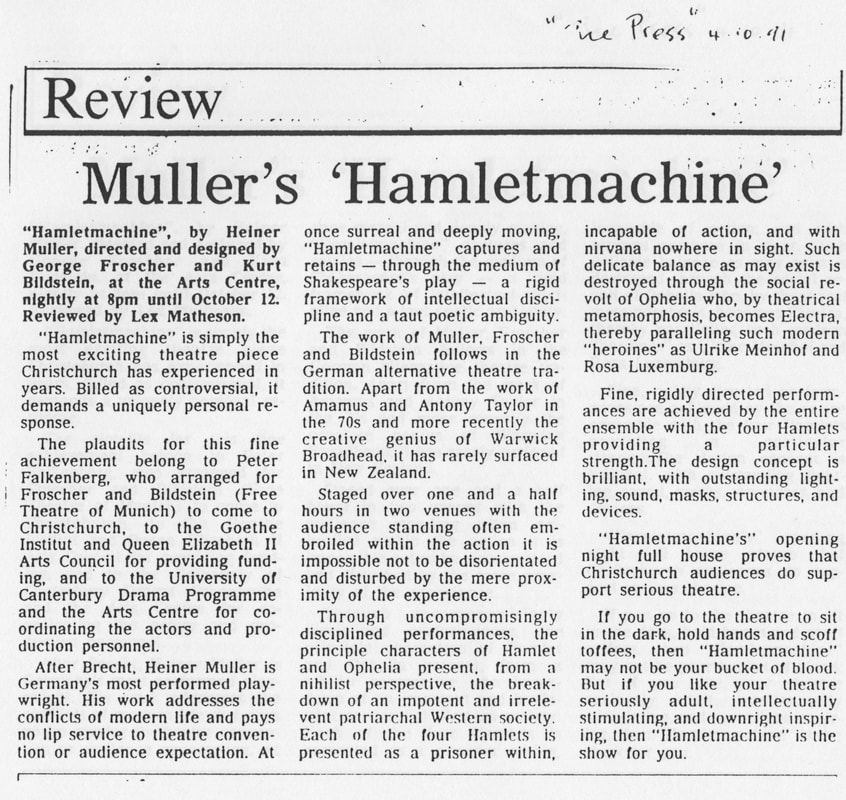

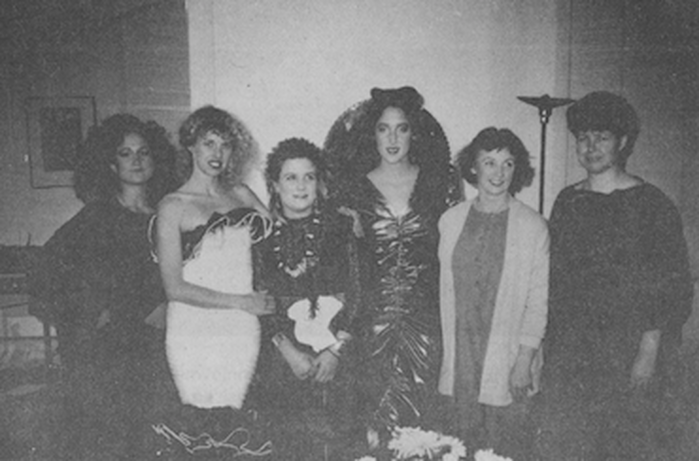

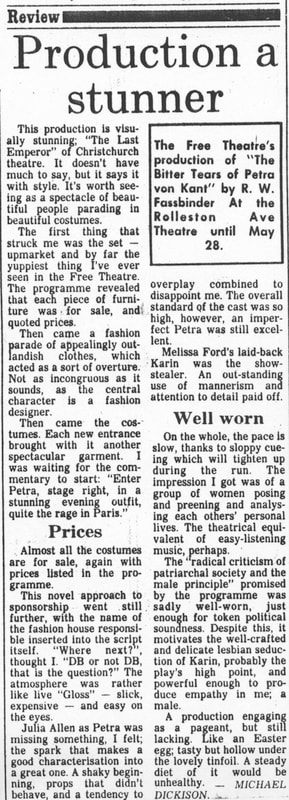
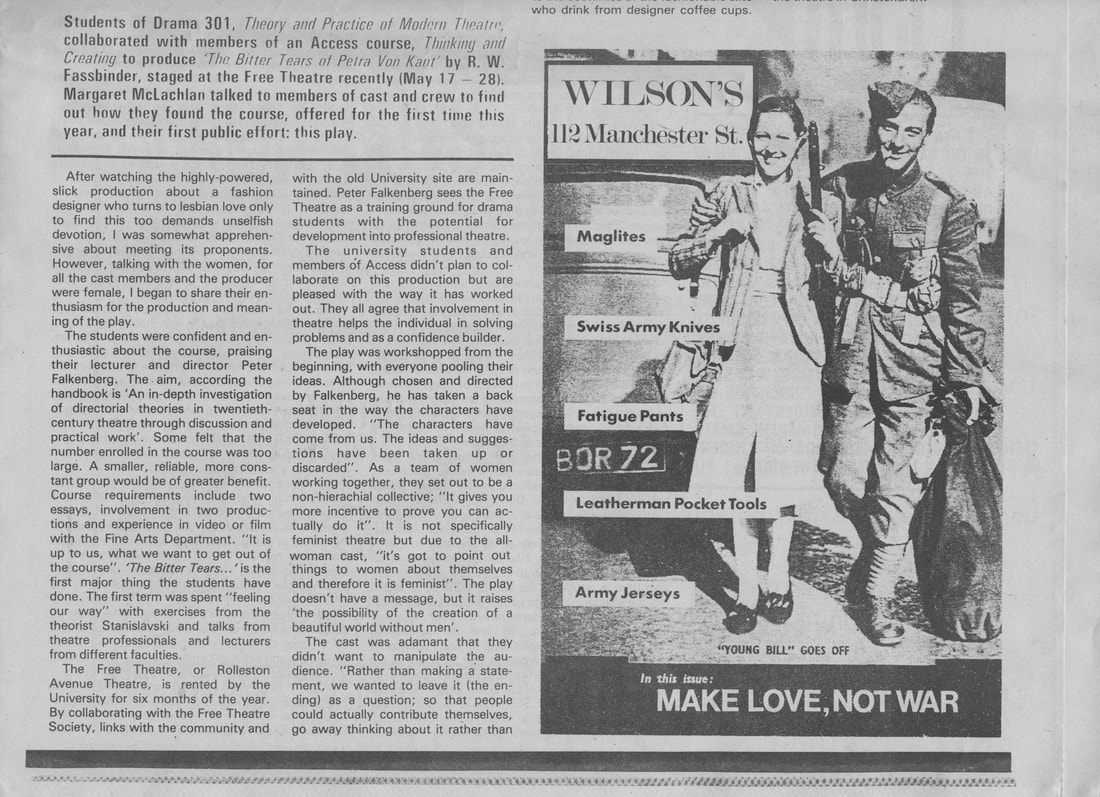
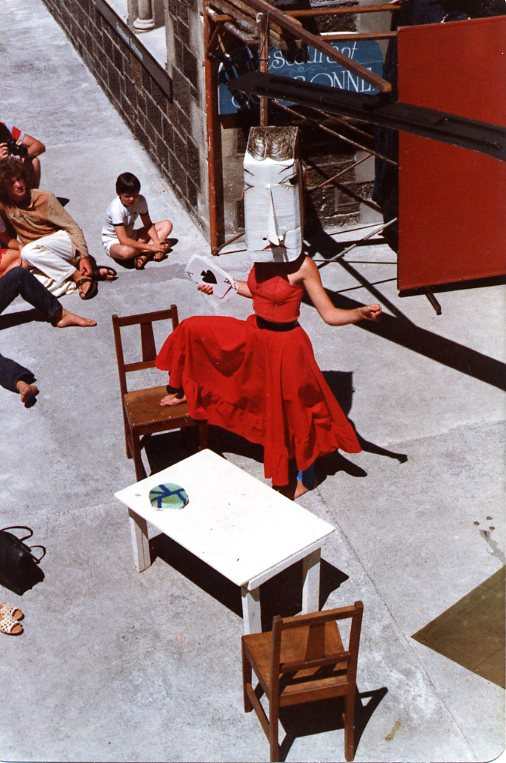
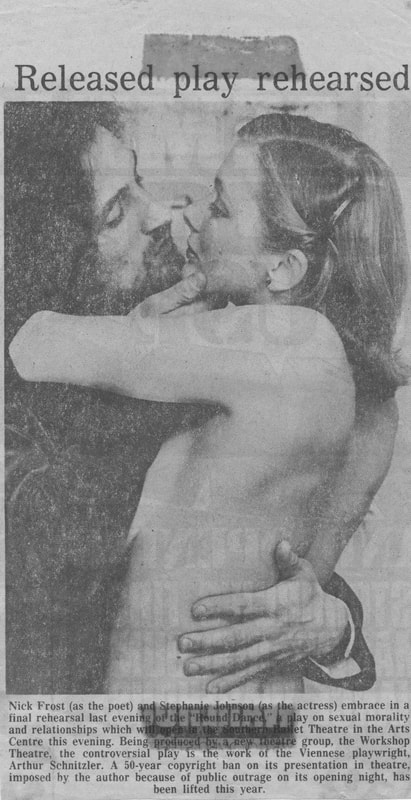
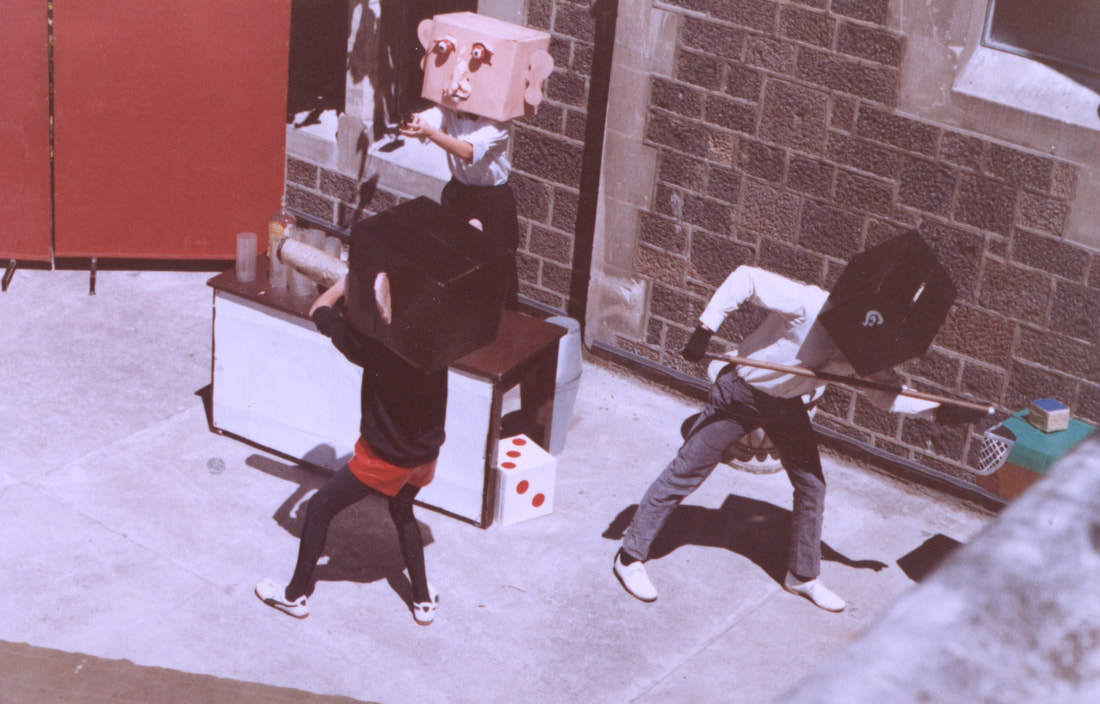
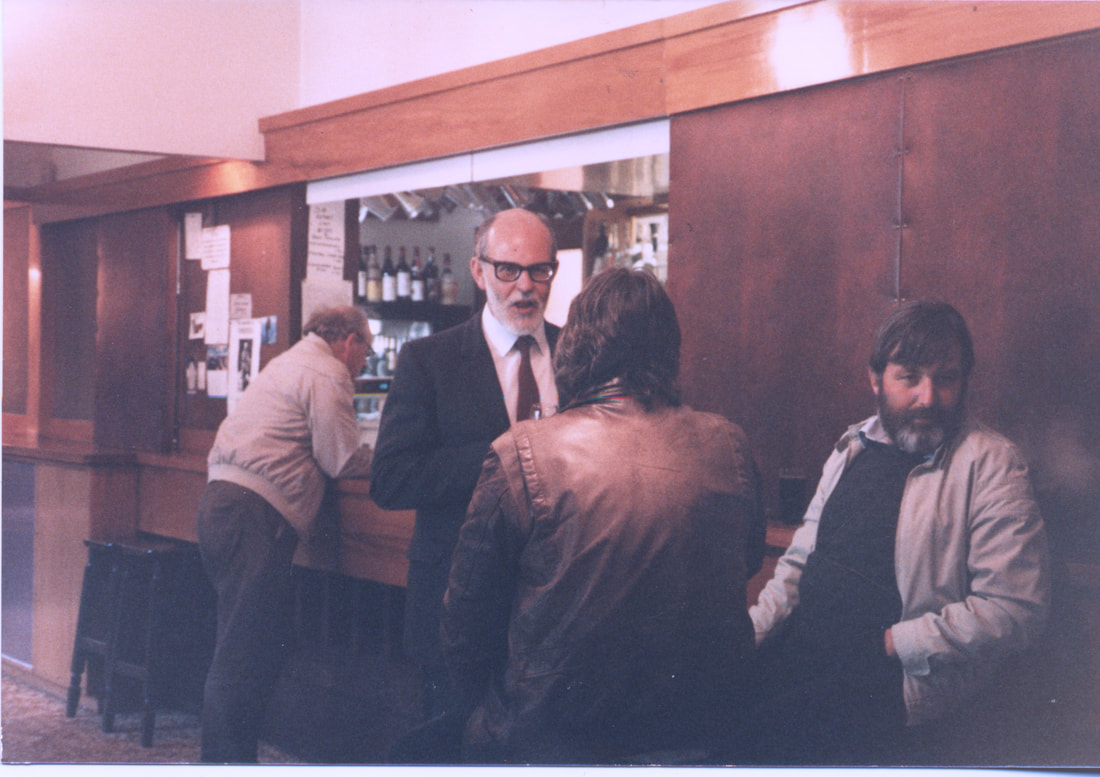
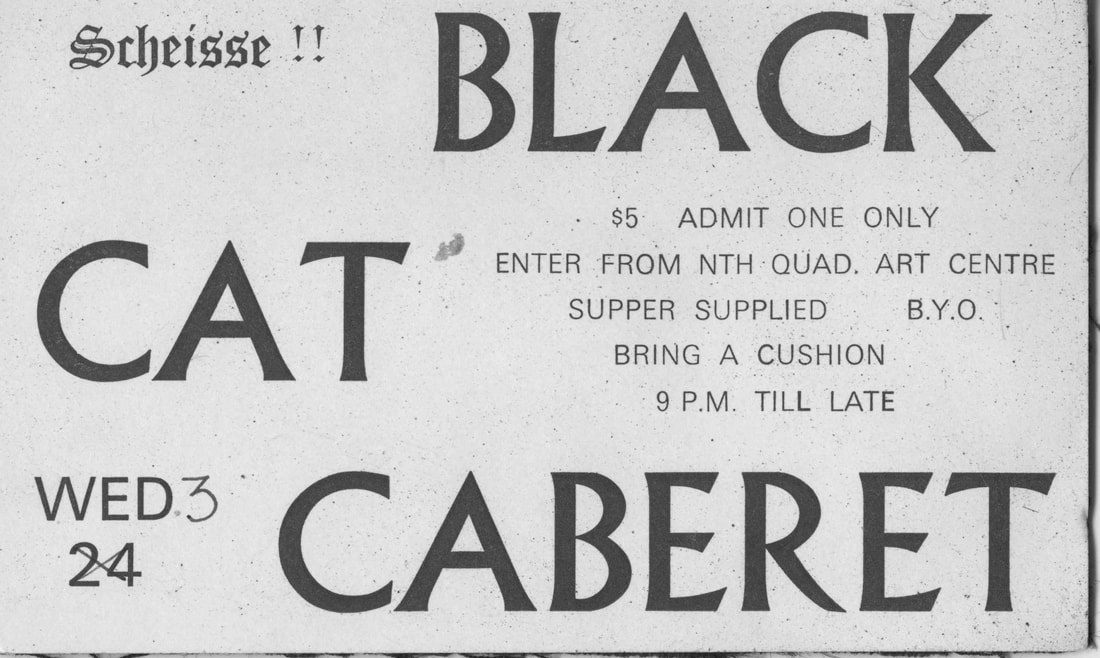
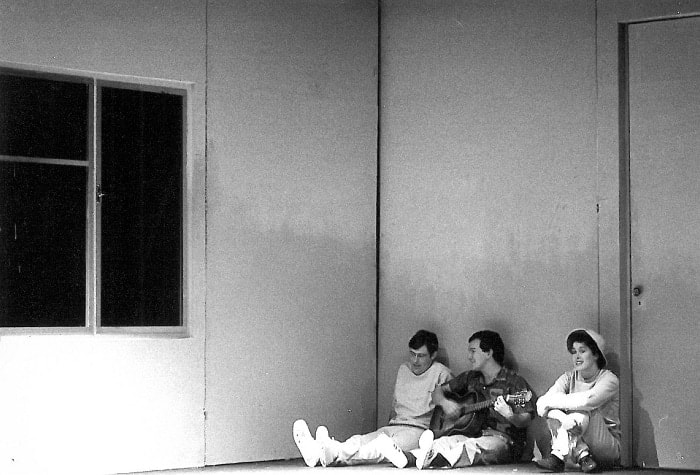
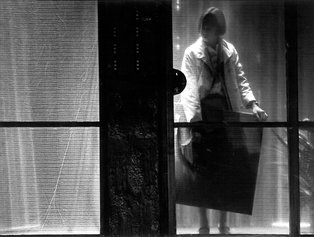
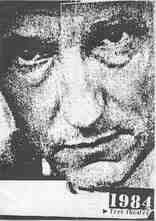
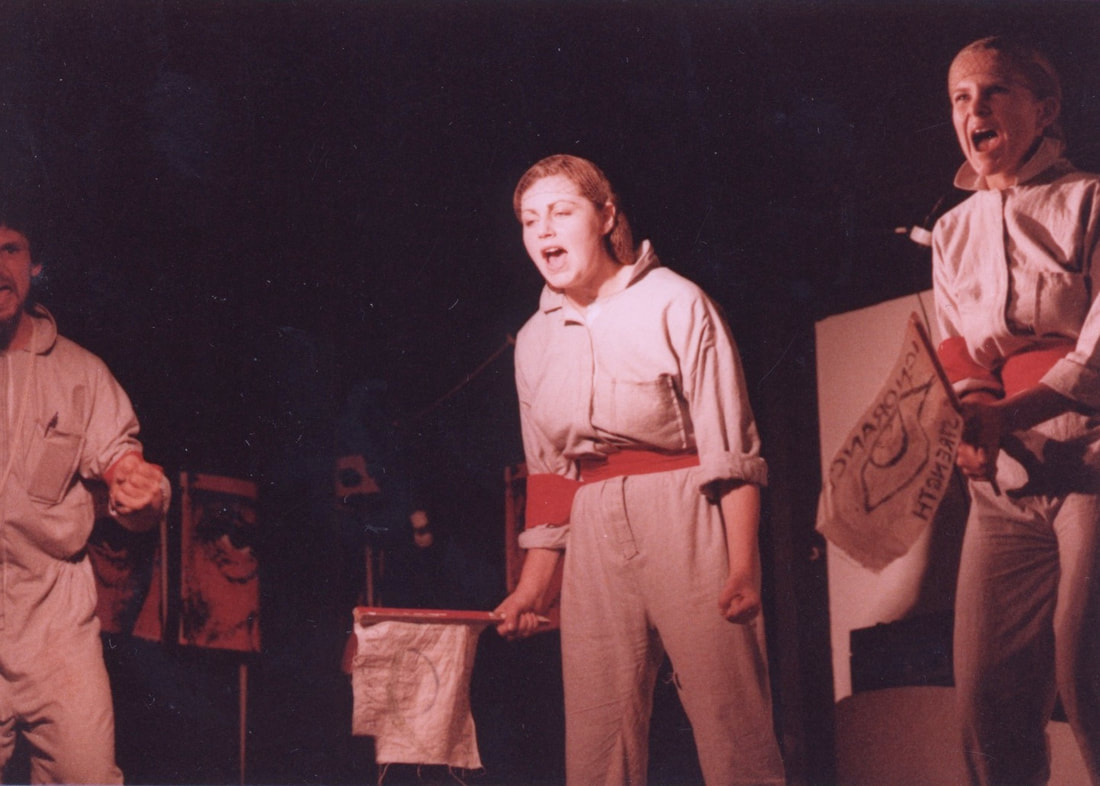
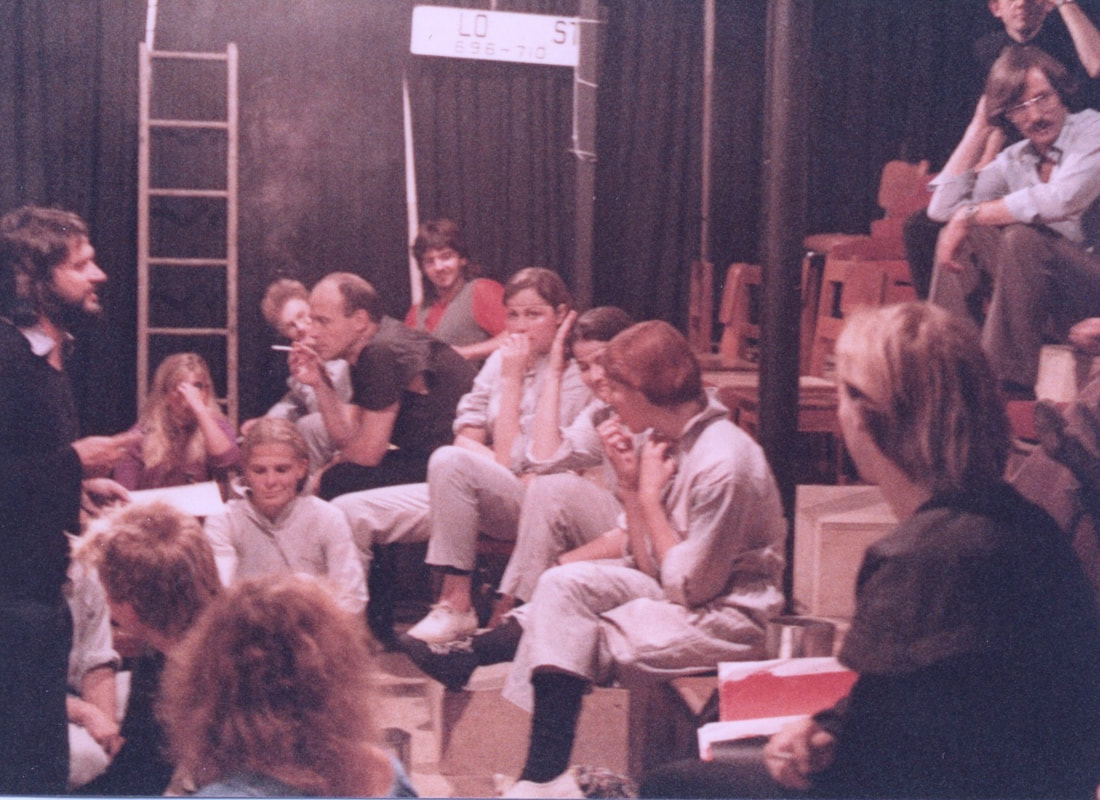
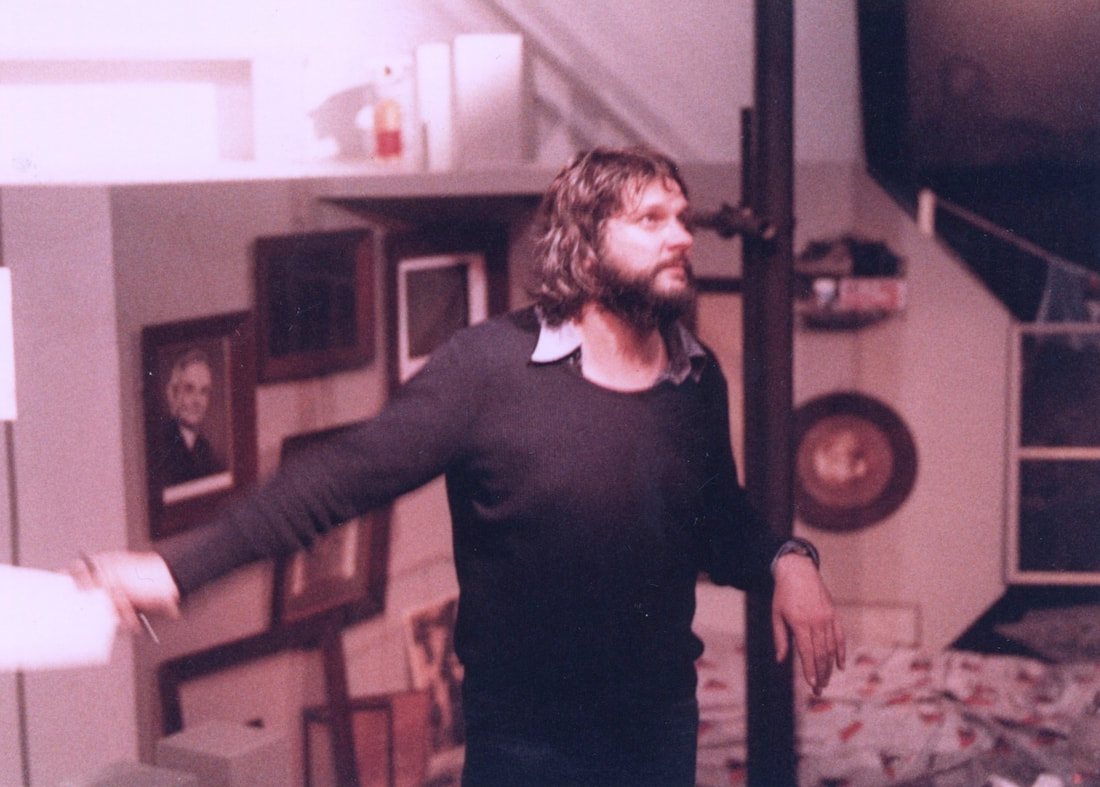
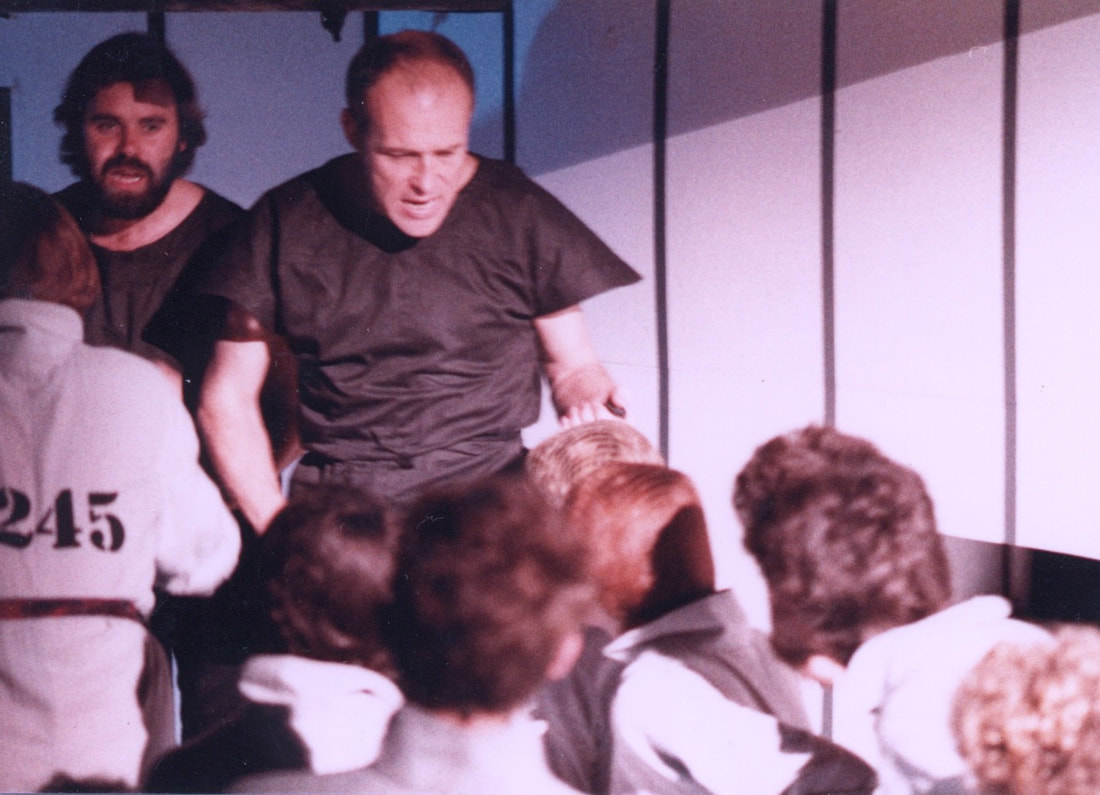
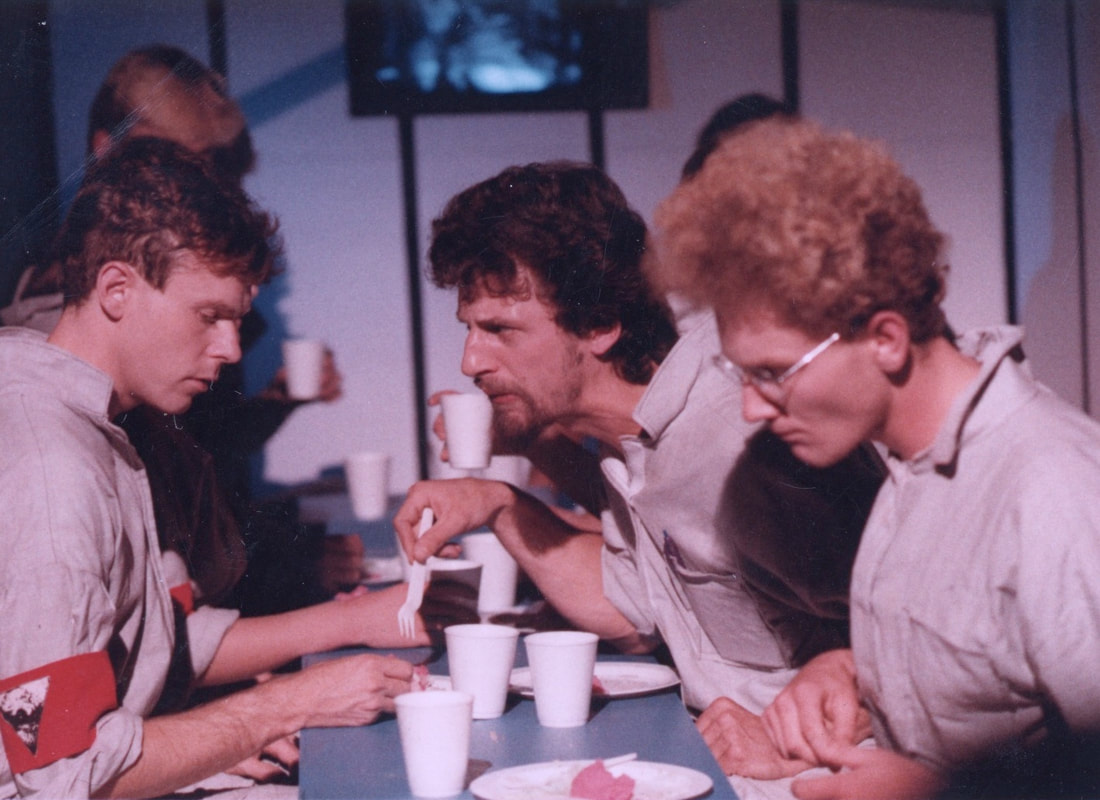
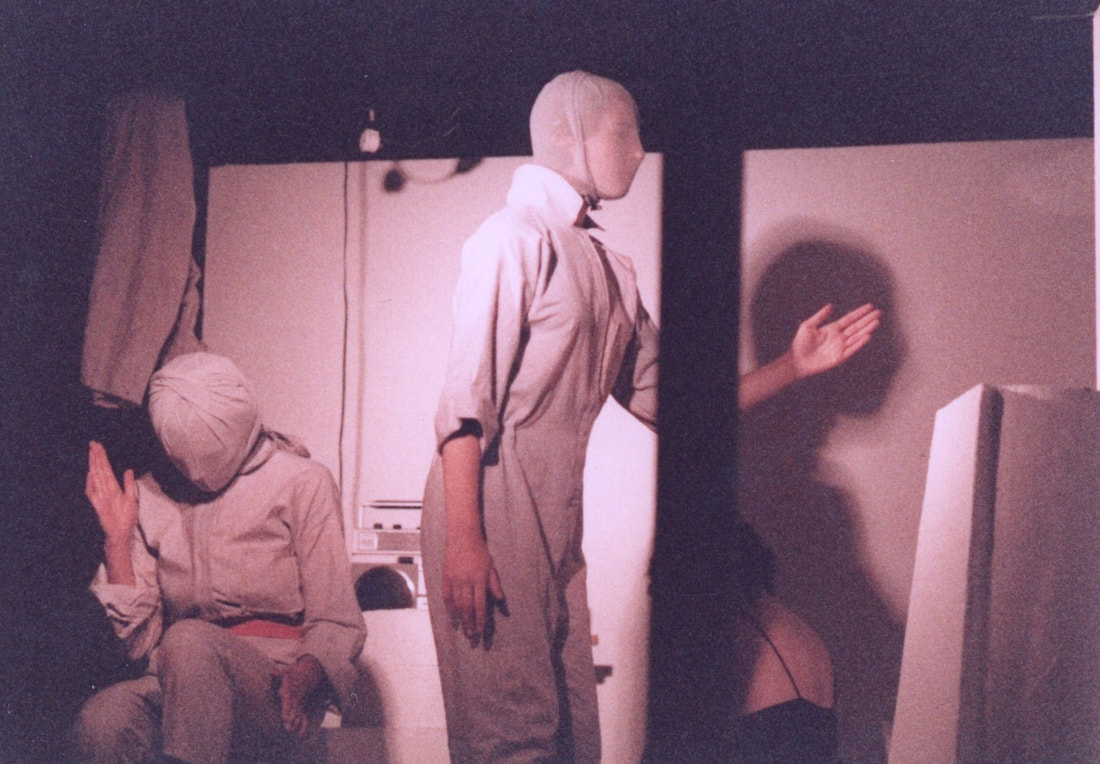
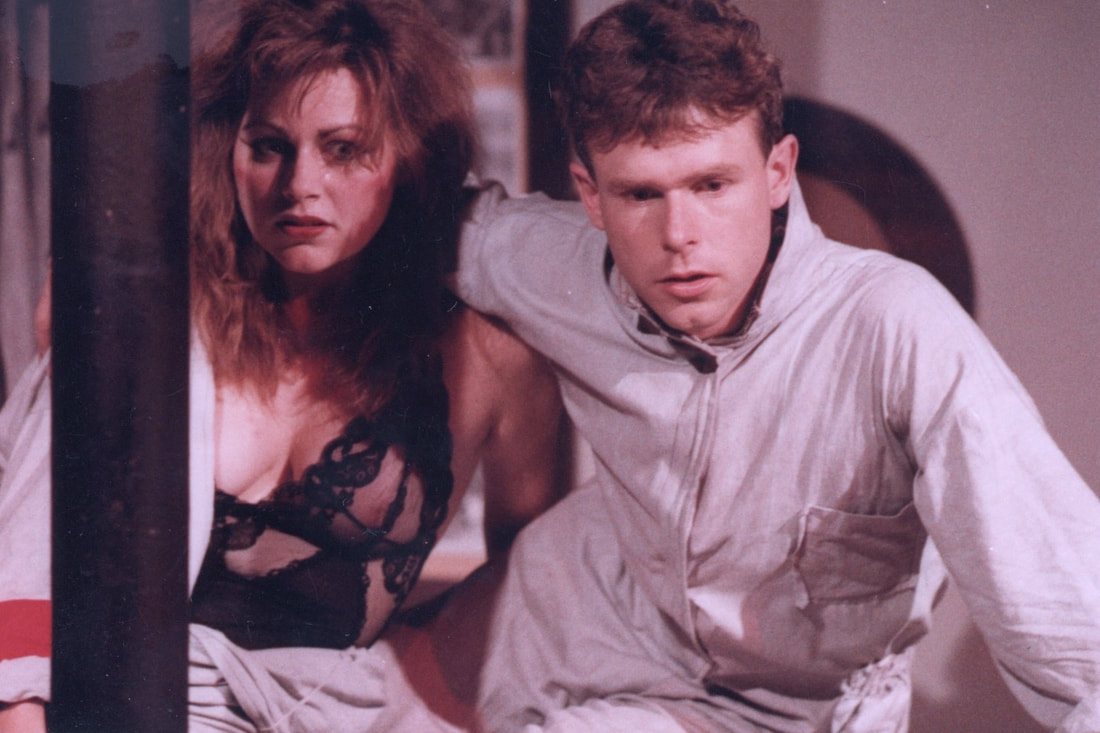
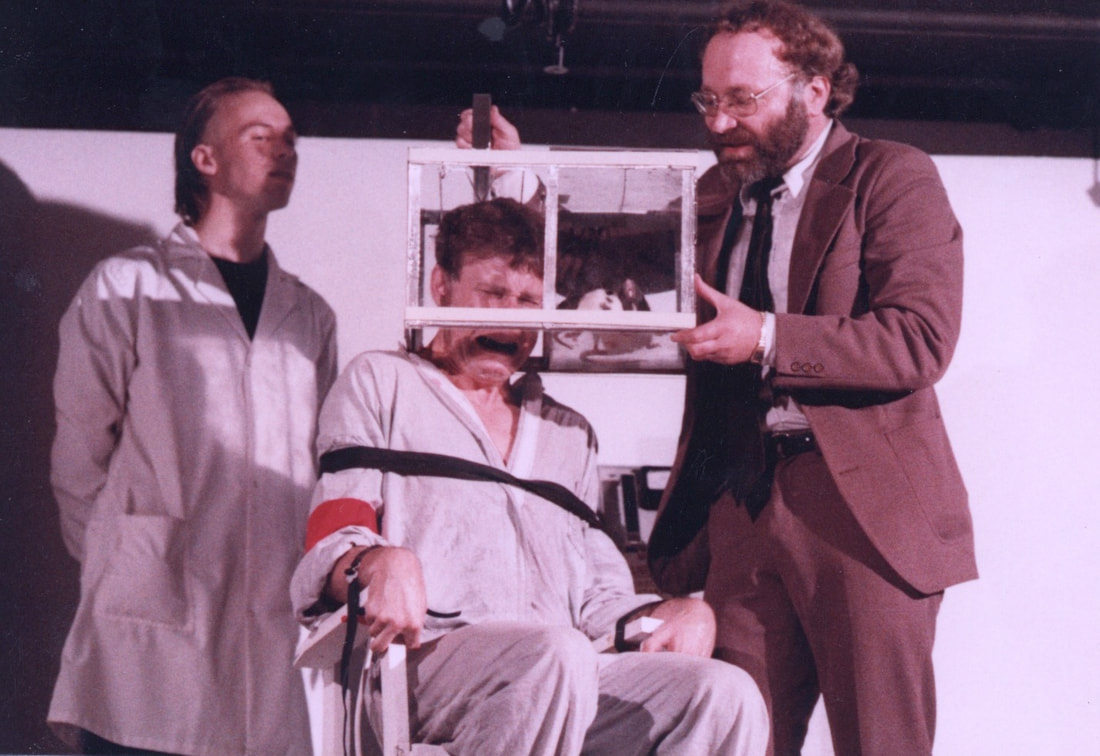
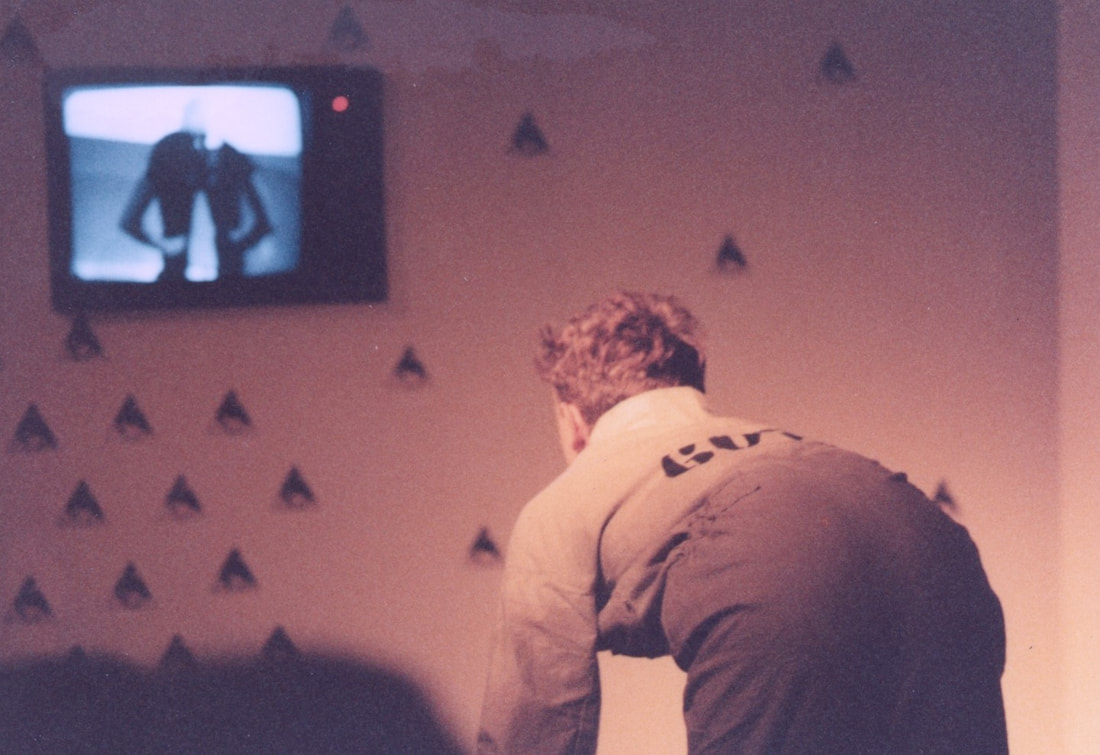
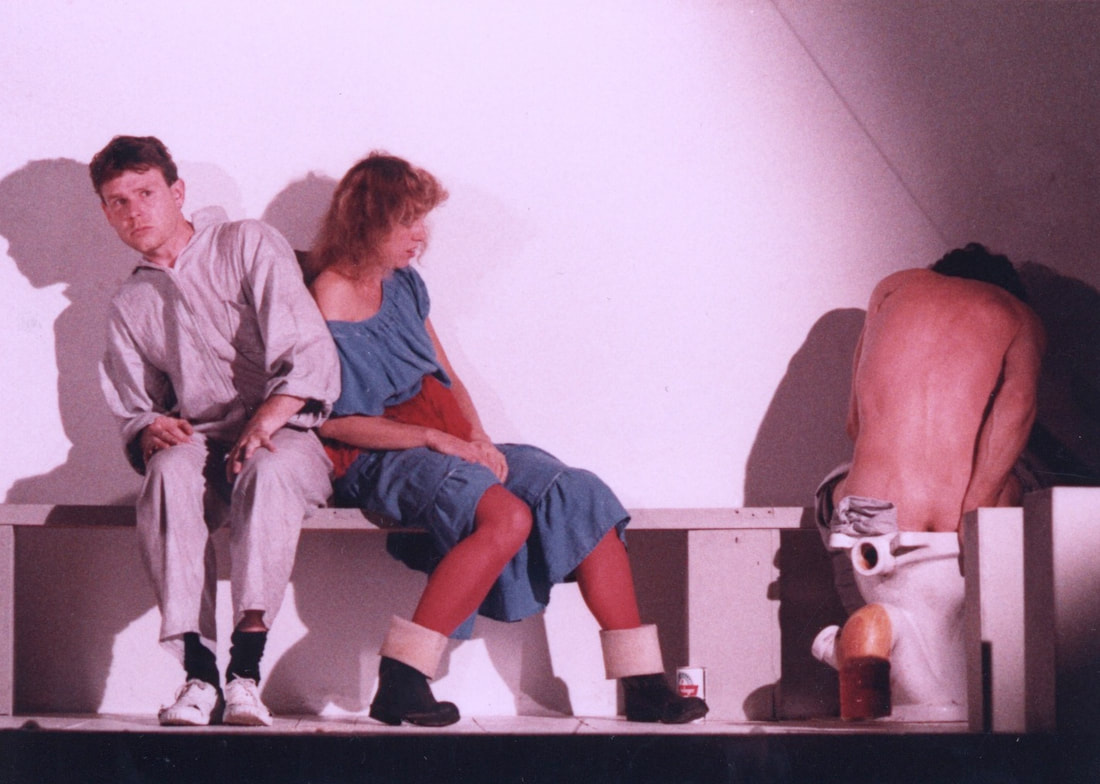
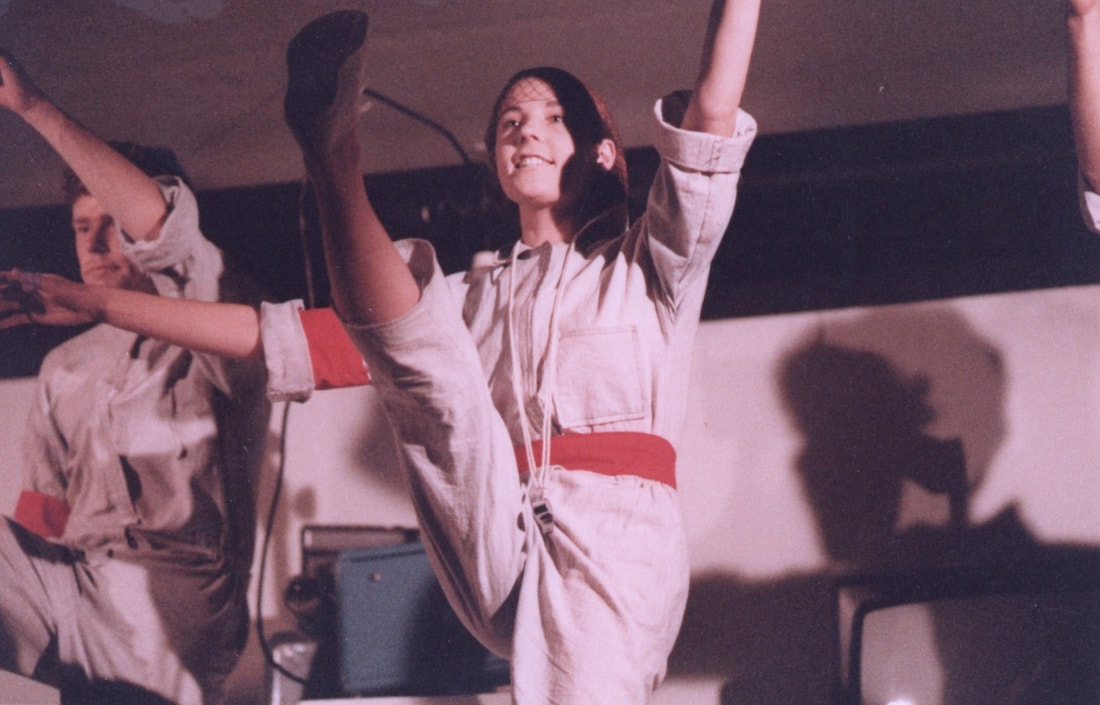
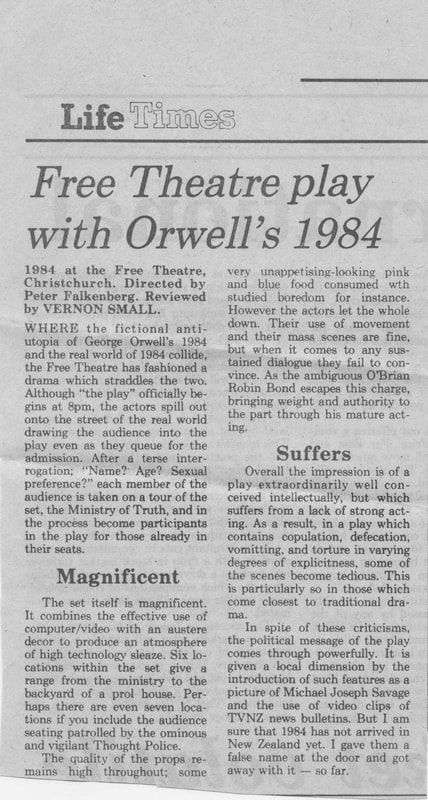
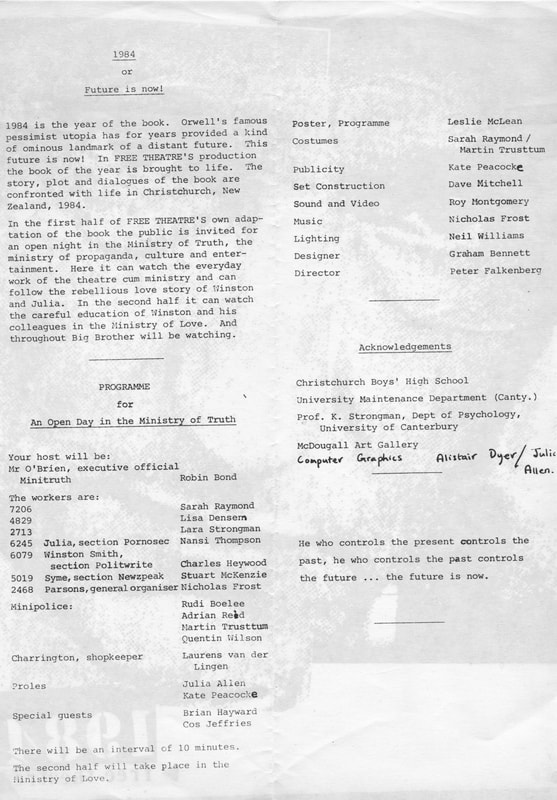

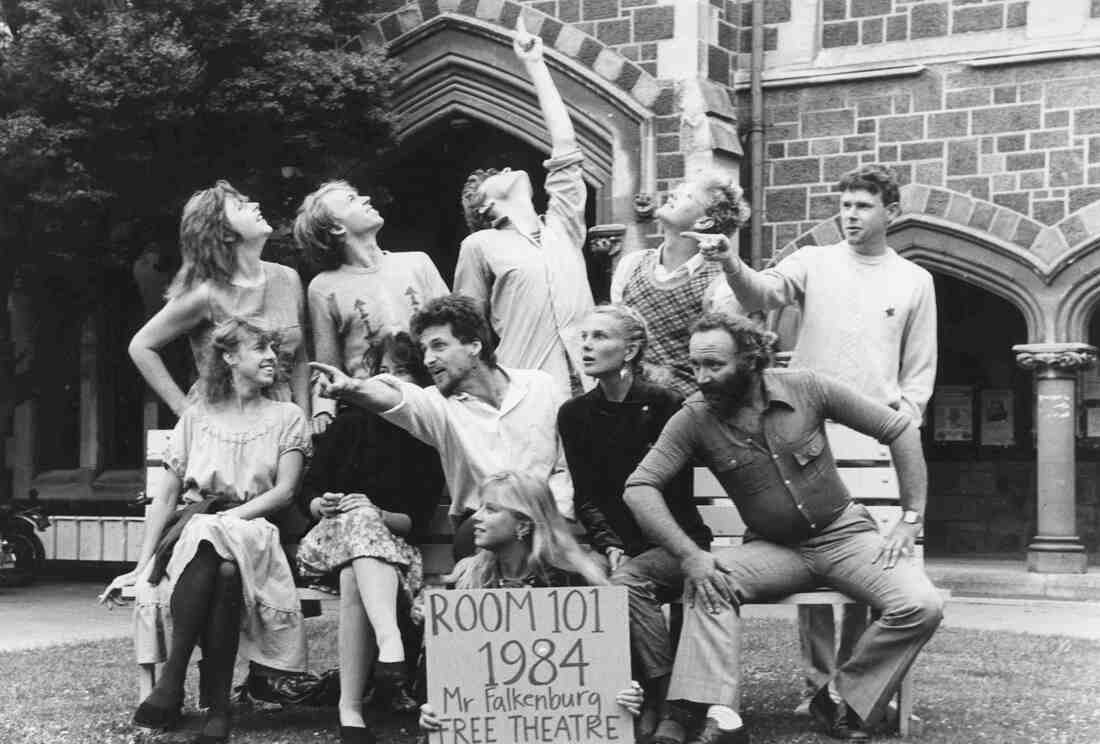
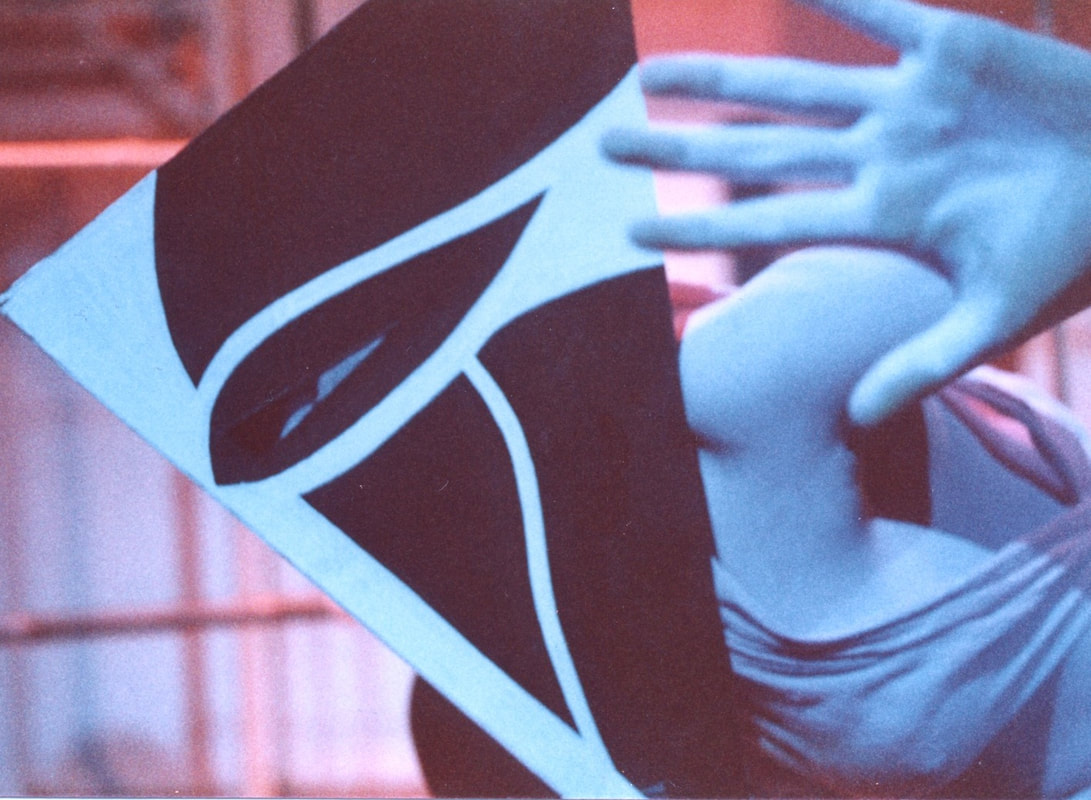
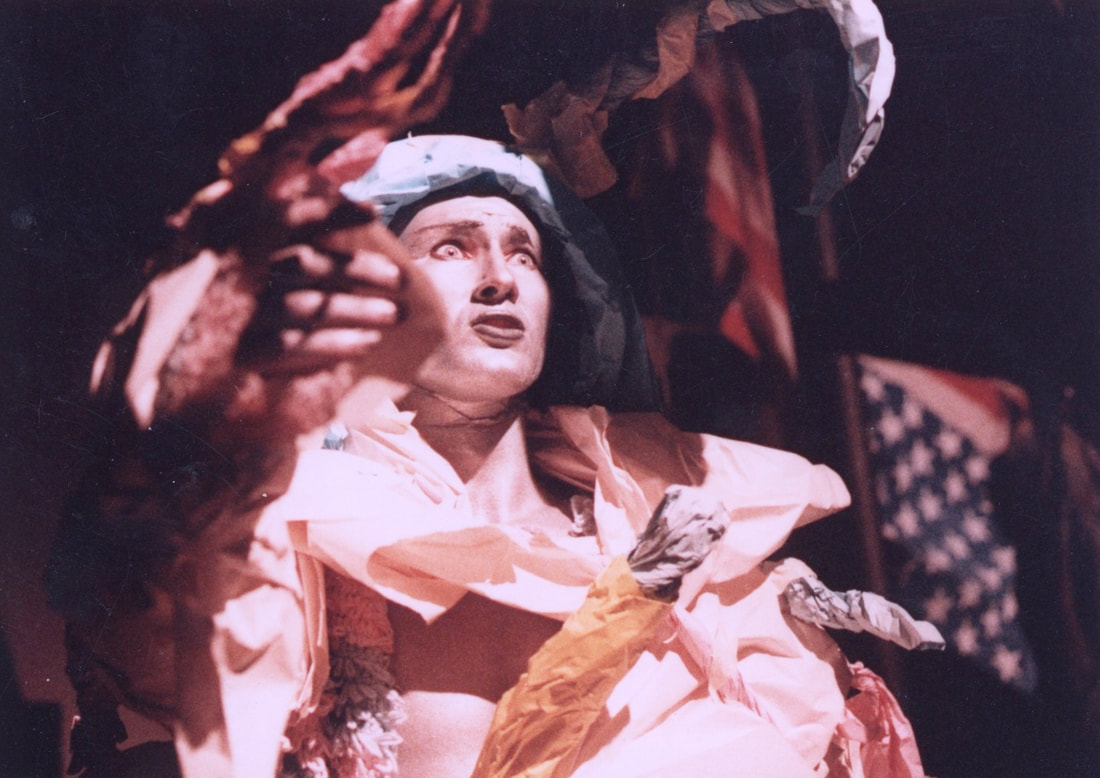
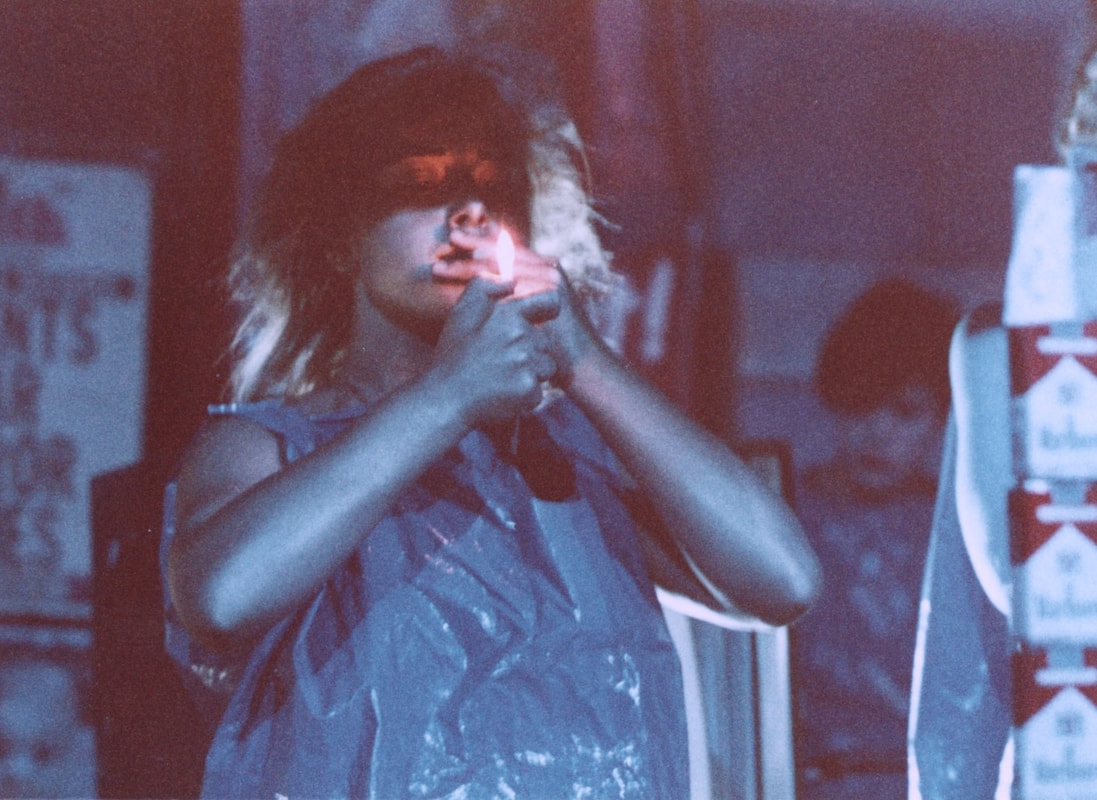
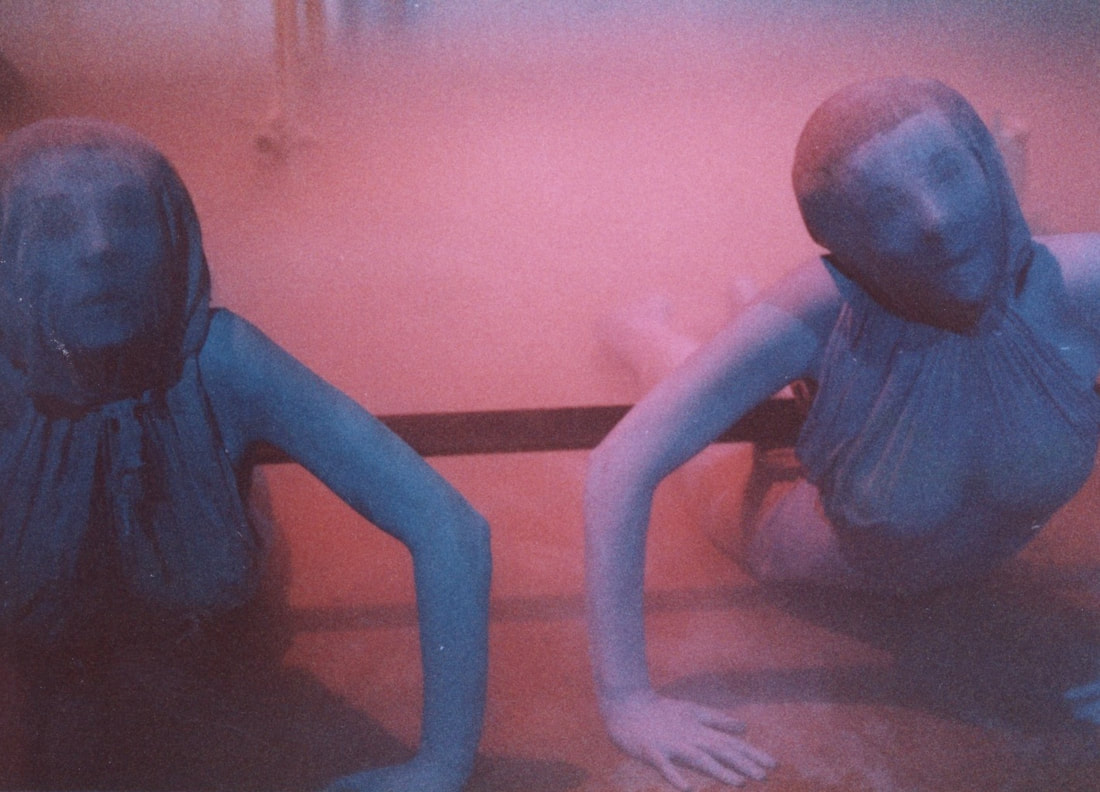
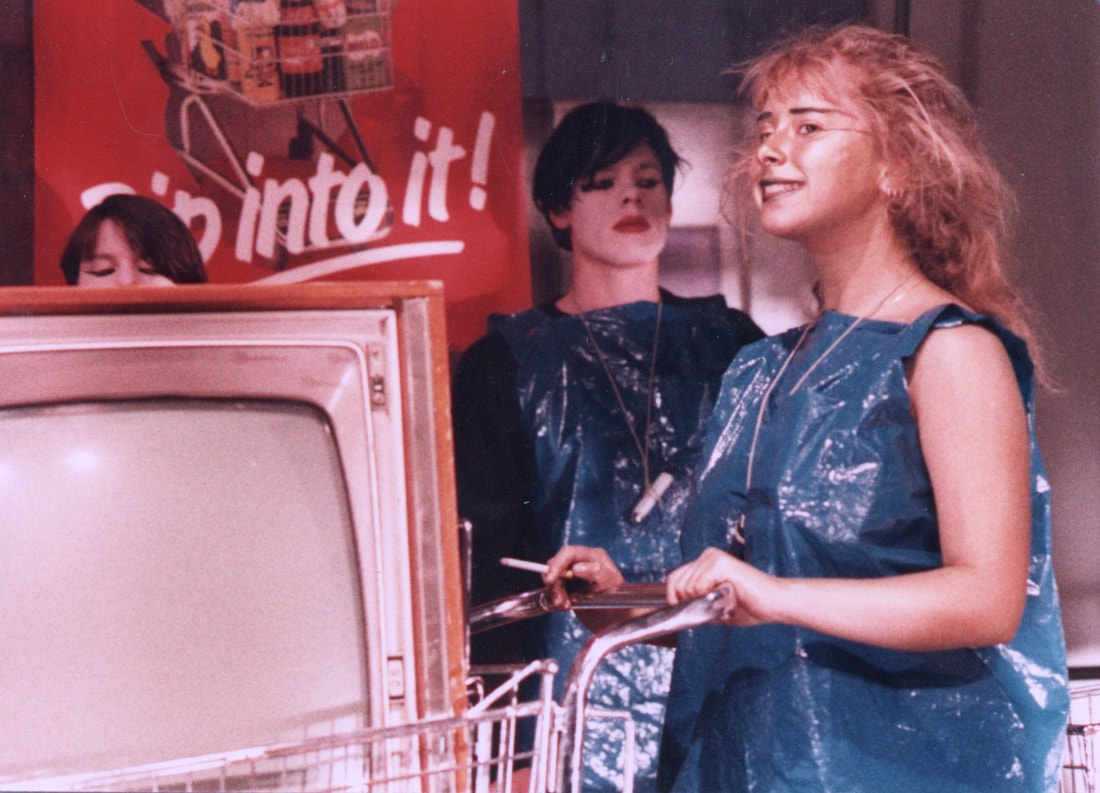
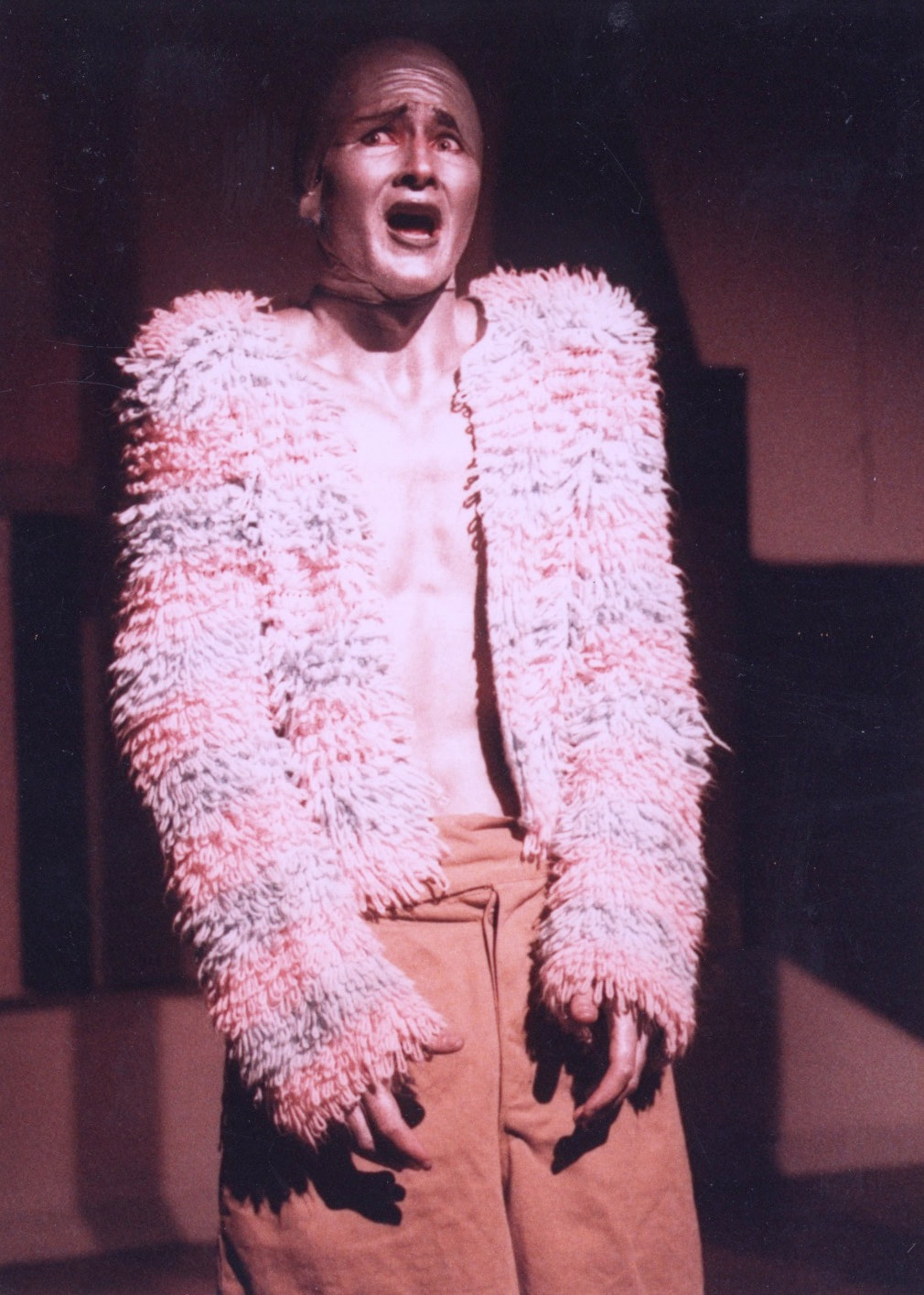
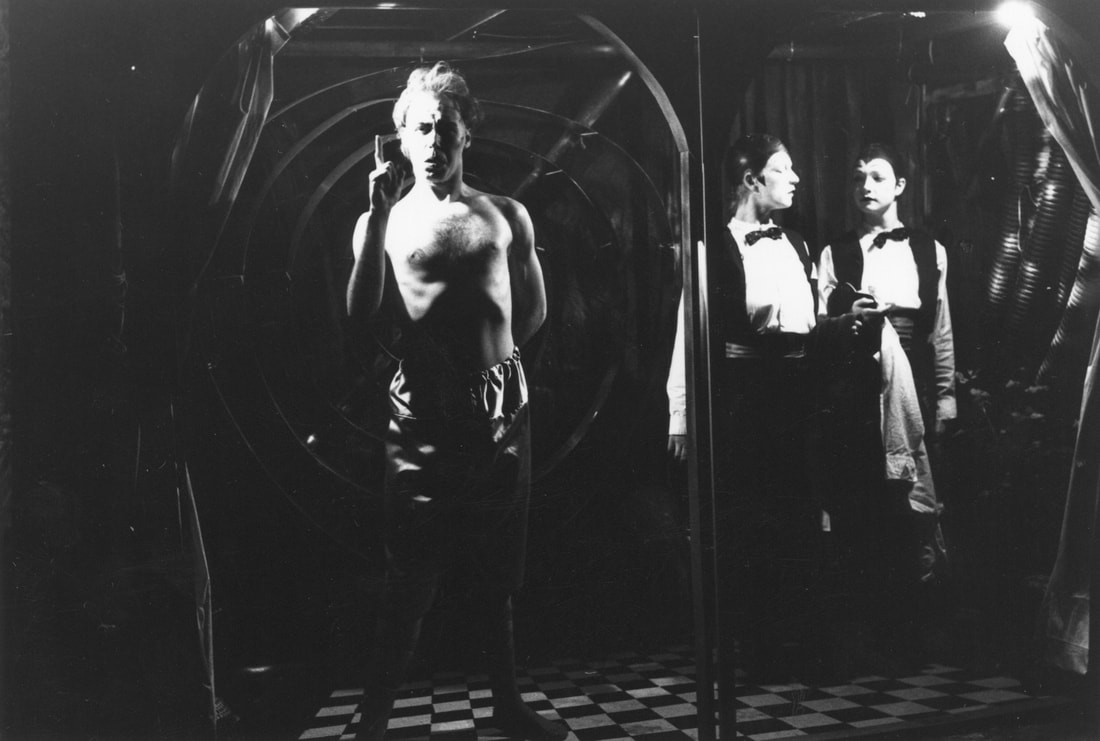
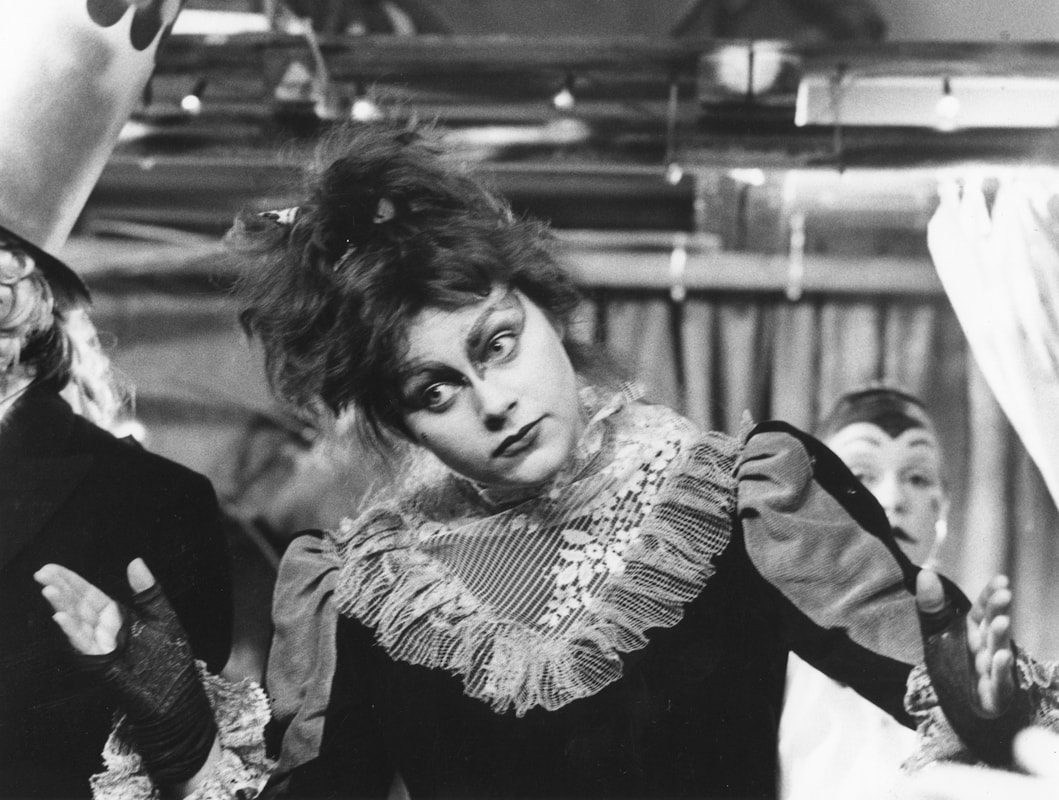
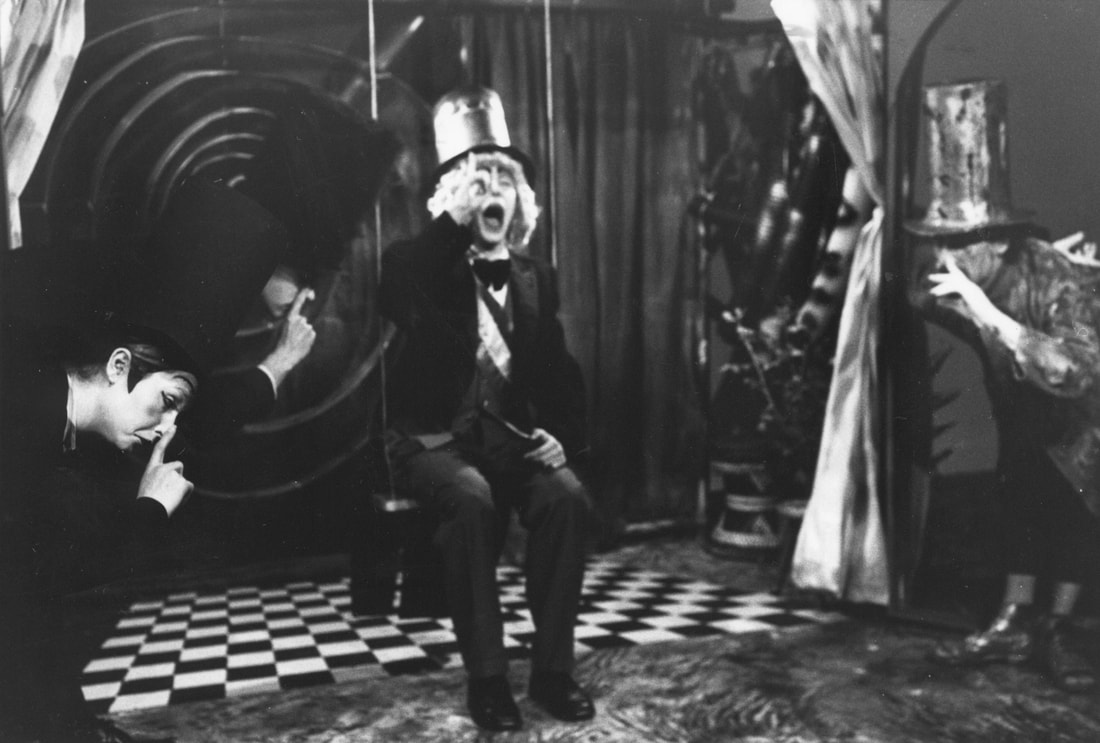
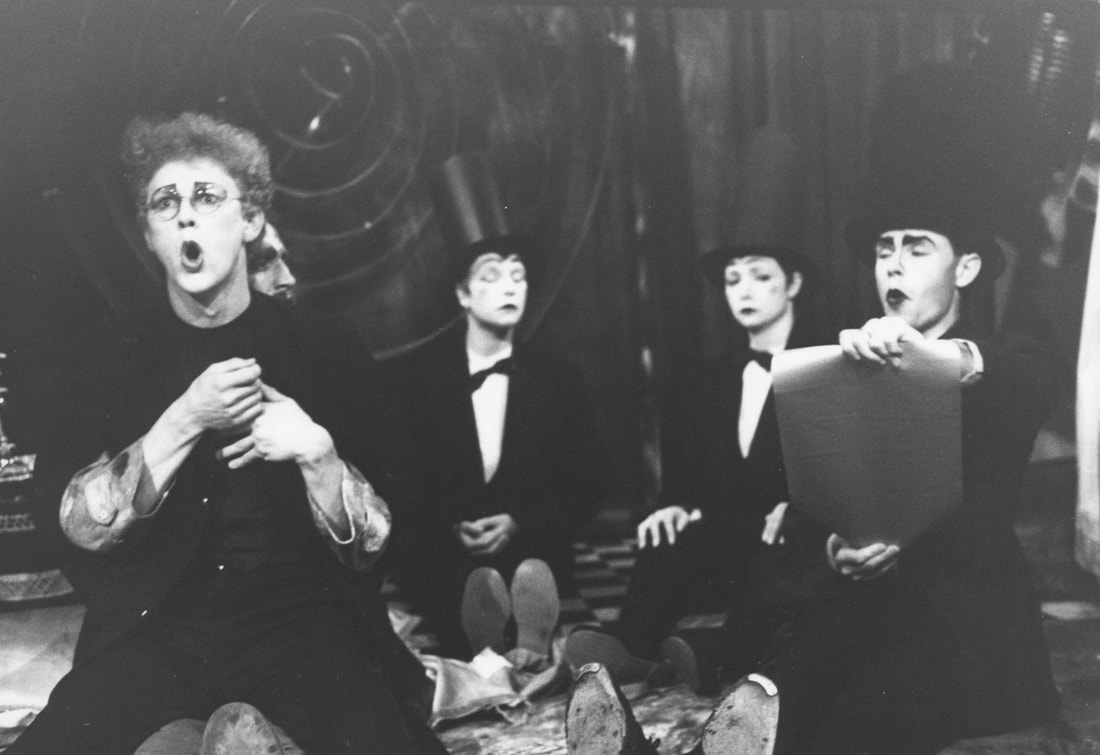
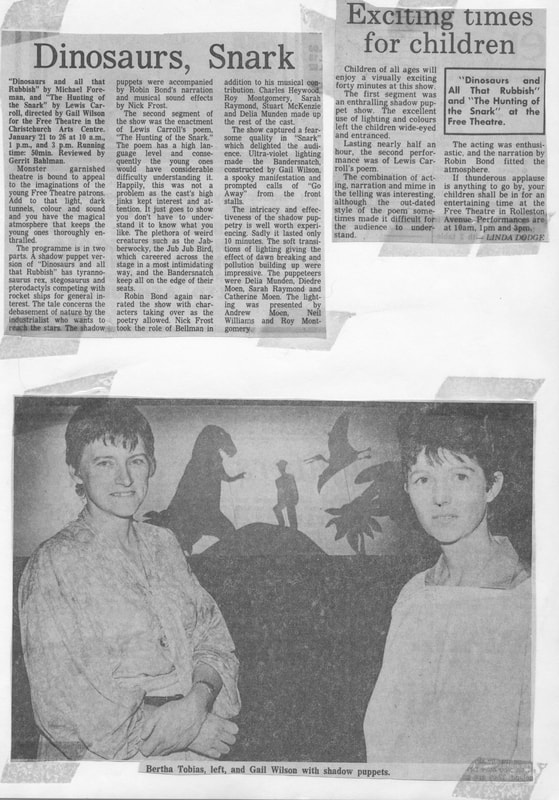
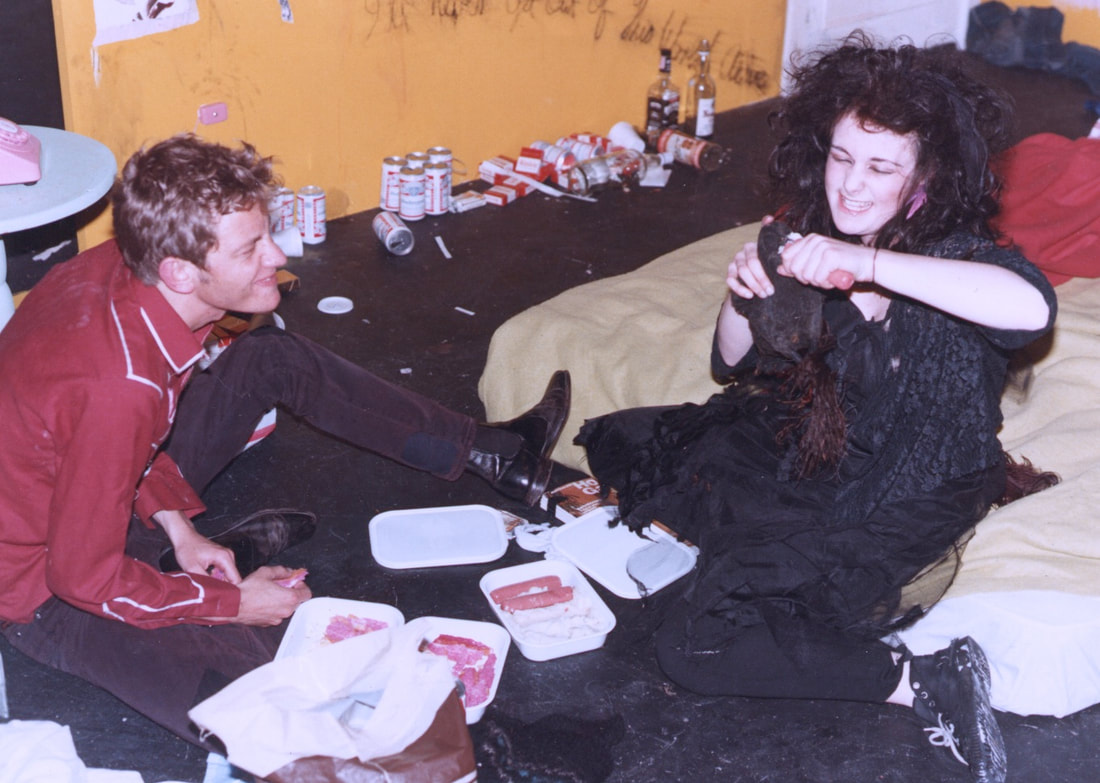
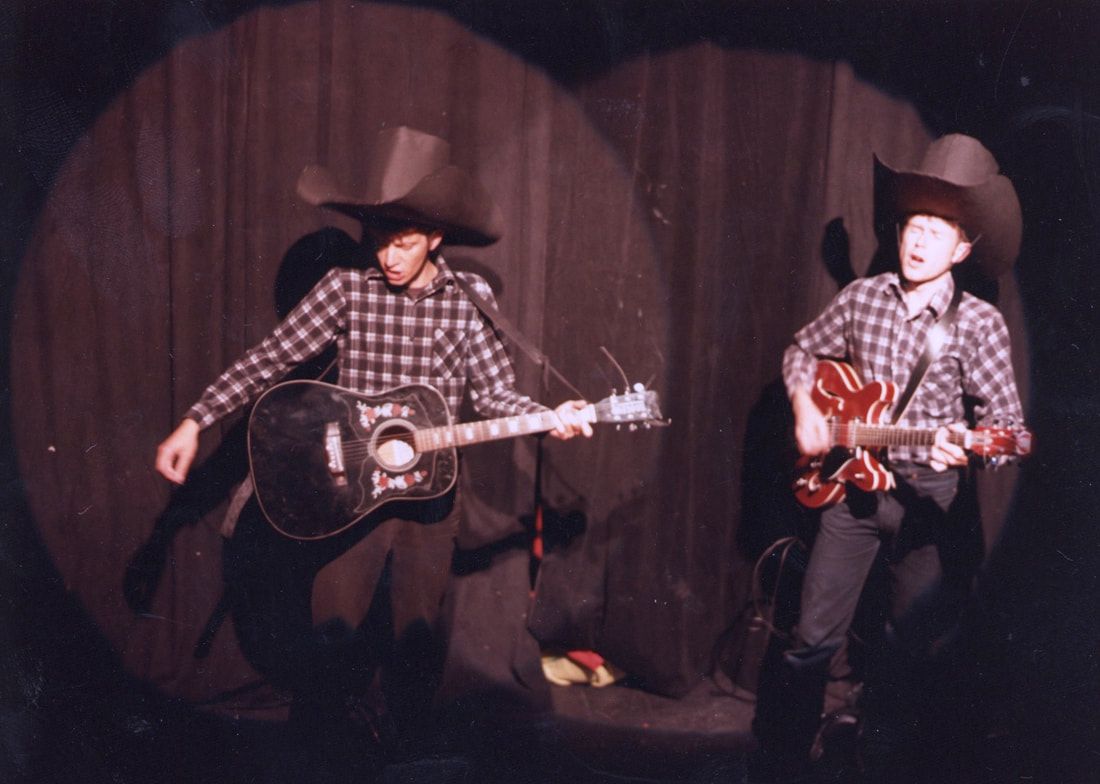
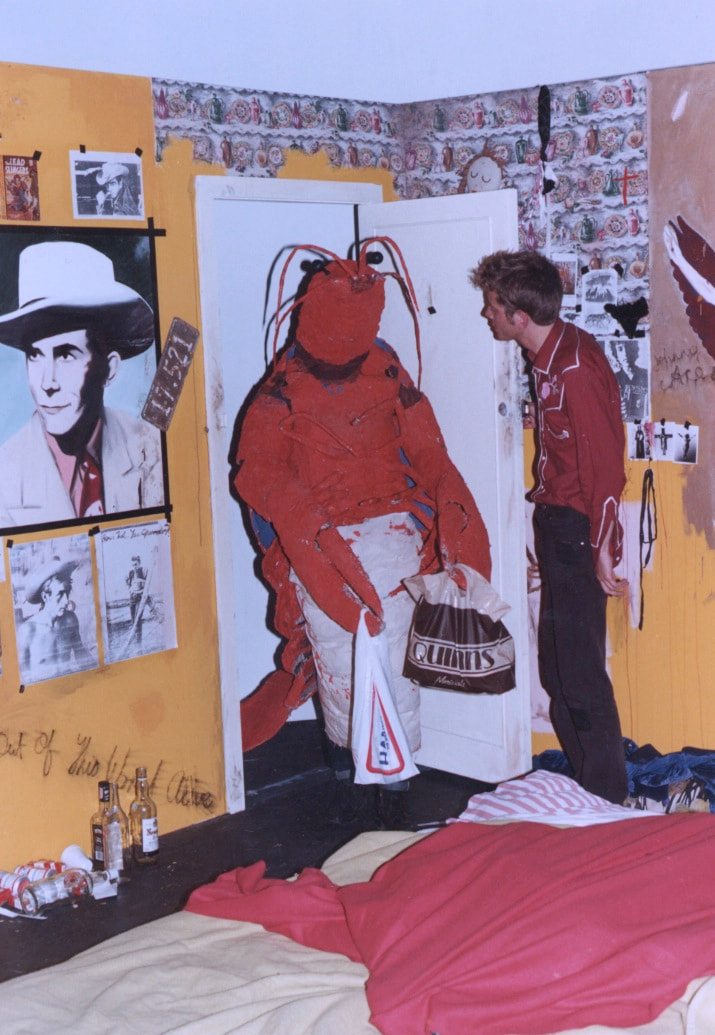
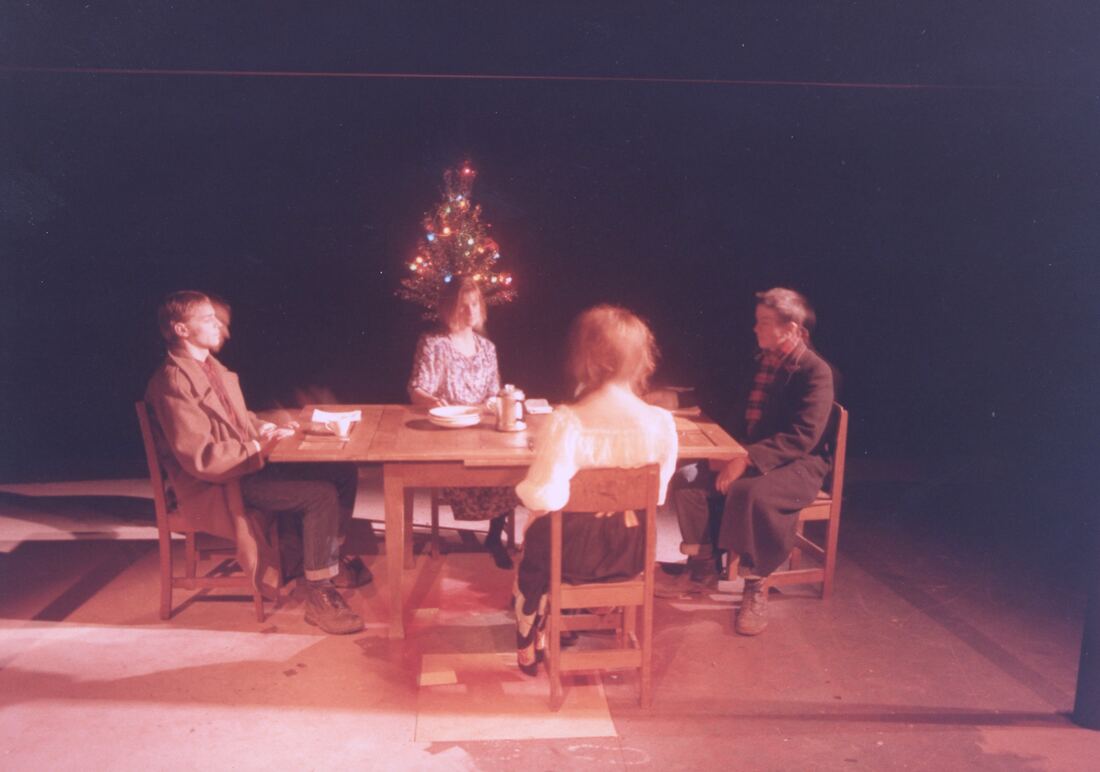
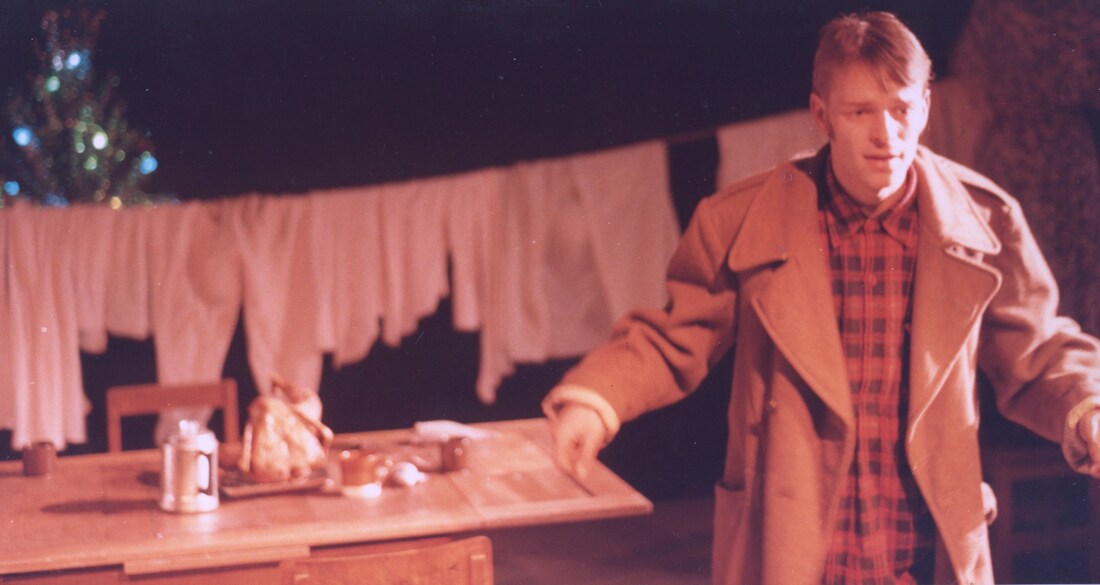
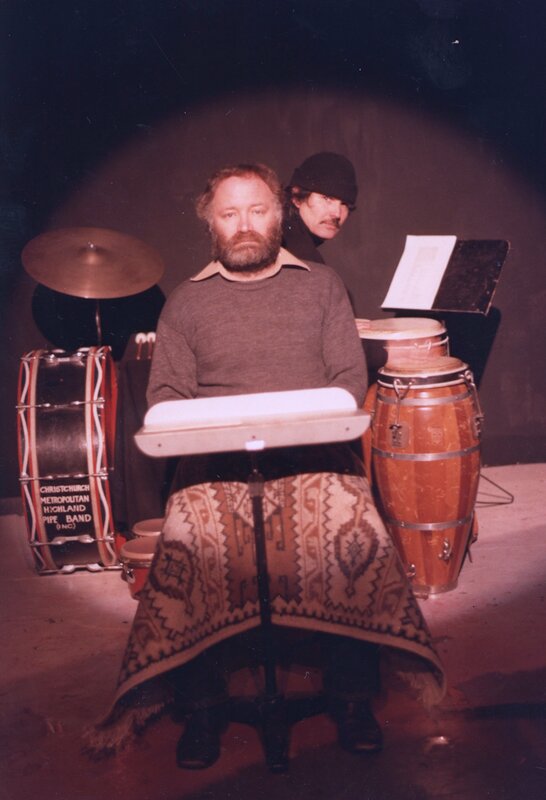
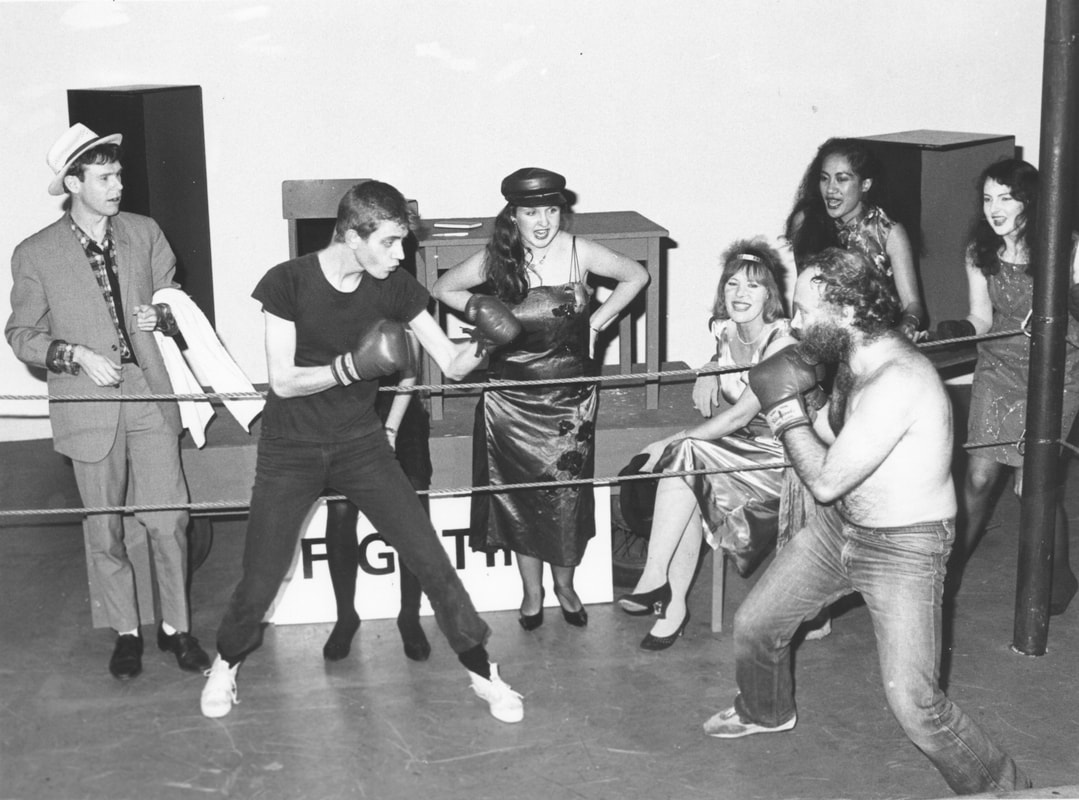
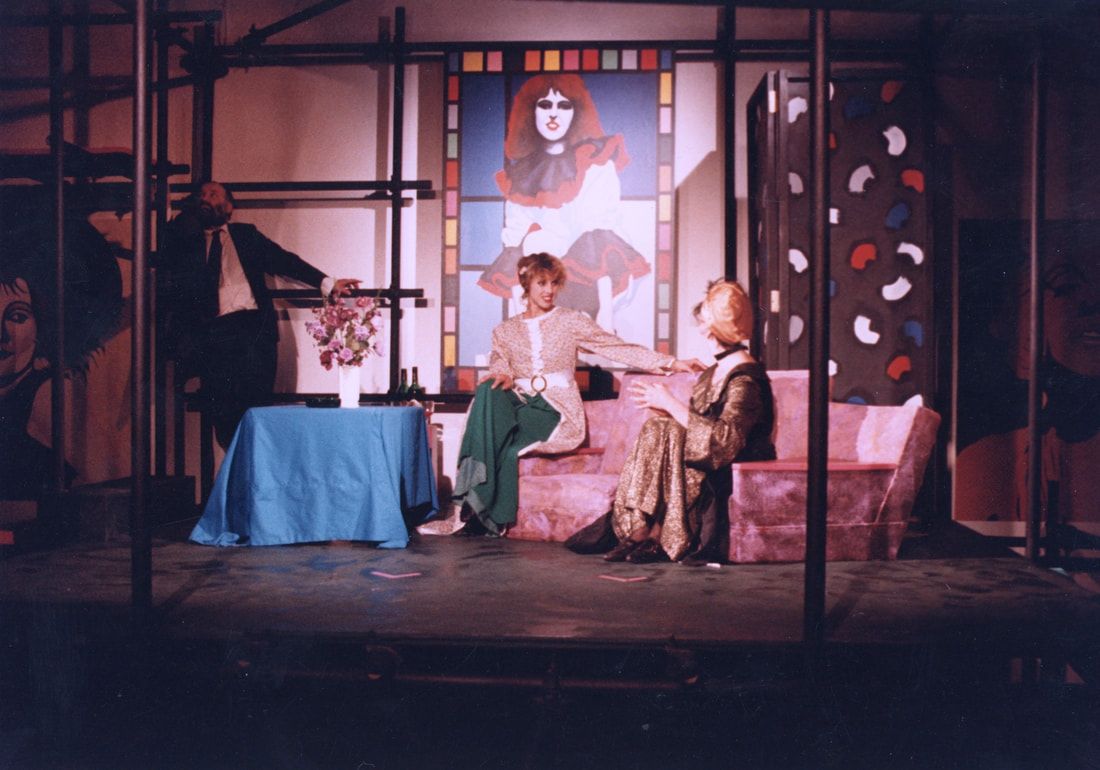
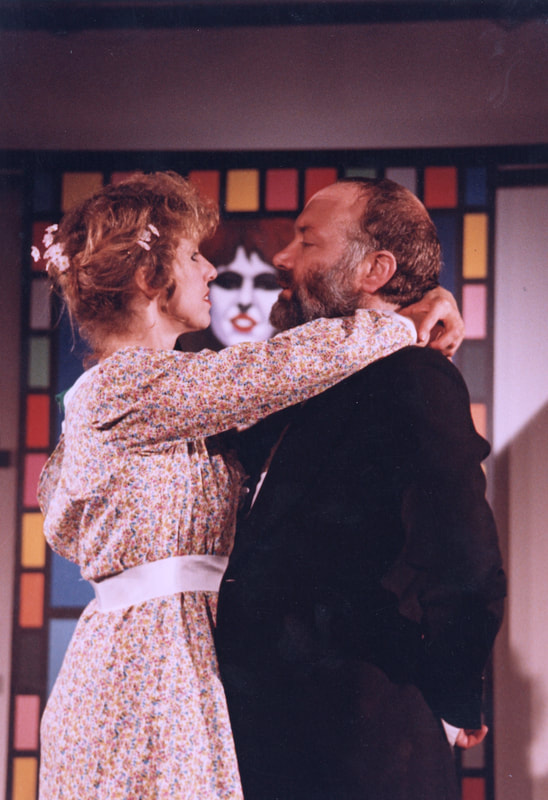
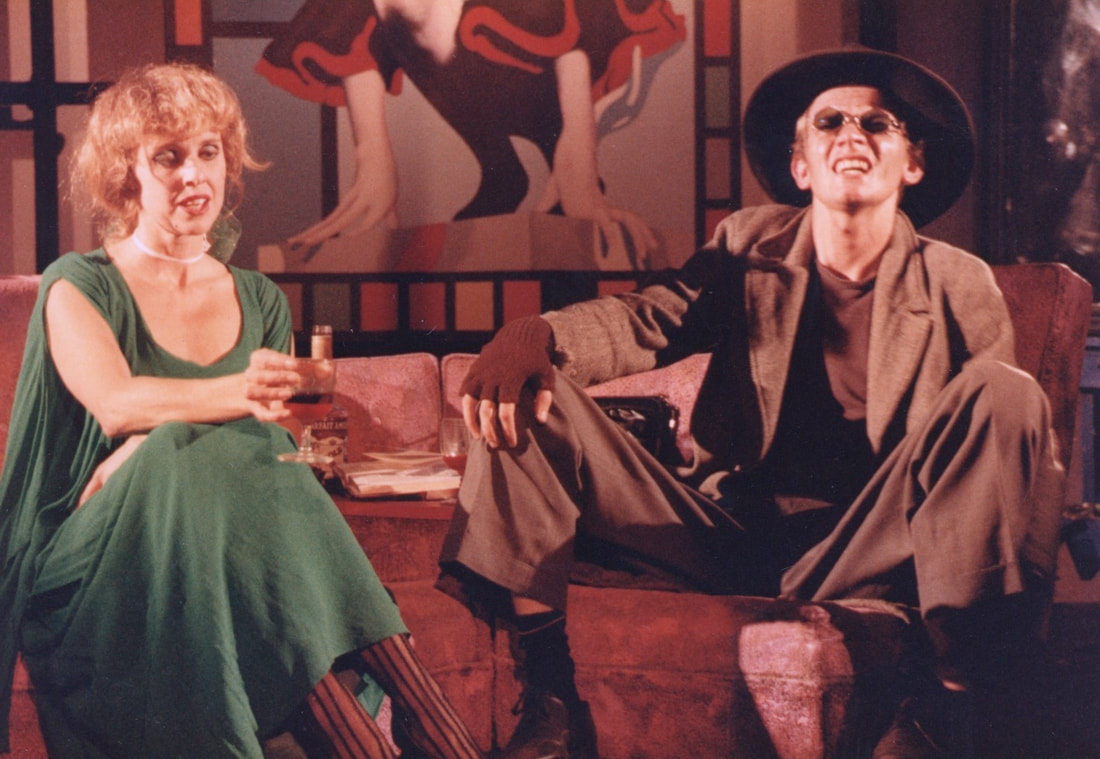
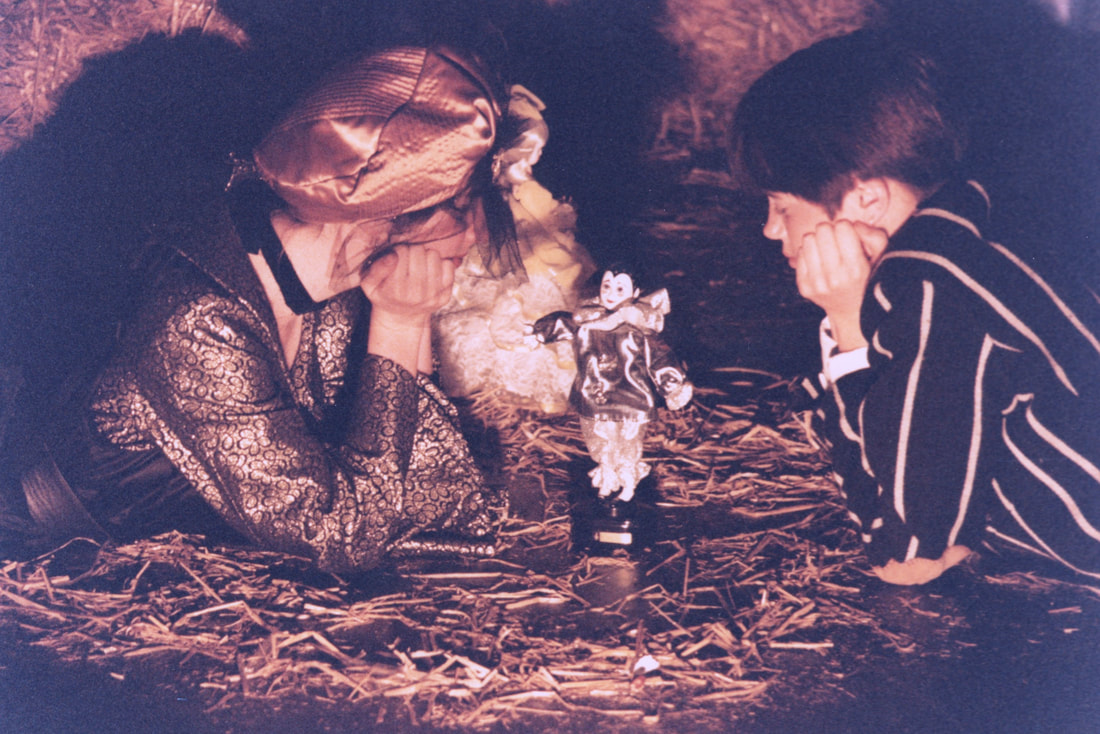

 RSS Feed
RSS Feed

